Text
Fashion Factfiles #3: The Sumangali System
Hey guys, happy February and welcome to another Fashion Factfiles blogpost!
The Fashion Factfiles is where we expose the brutal realities of the garment industry, the side that the big corporations and big names in fashion work hard to hide behind ‘girl power’ tees and ‘look at us recycling omg we duz care’ campaigns.
This month we’ll be highlighting an issue that many may not be familiar with, but is absolutely horrific and heartbreaking: the Sumangali System.
WARNING: Content regarding sexual abuse and suicide throughout.
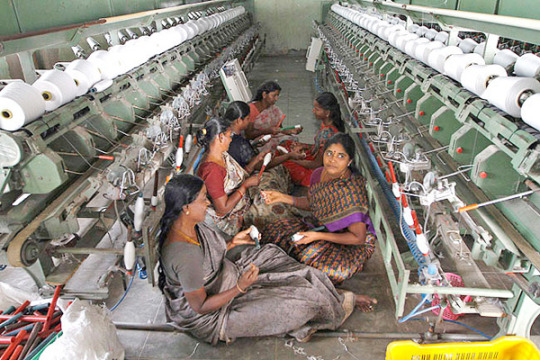
Source: http://www.sify.com/news/sexual-abuse-in-textile-mill-help-us-write-tamil-nadu-women-news-national-qlbmpRabbcdgh.html
In Tamil Nadu, India, there are about 1600 spinning mills (where fibres are spun to make yarn- like the thread you see sold in Queens market), that employ around 400,000 workers. 90% of the workers are women, with about 60-70% aged 15-18.
Many of these women are employed through the Sumangali (married woman) Scheme; an employment scheme that is essentially bonded labour (when a person is forced to work to pay off a debt) and child labour.
Indeed, this scheme involves agents from spinning mills visiting impoverished families in the villages, recruiting young girls to work in the mills for a 3-5 year contract, with a promise lump sum of money at the end of the contract that they can use as dowry (money given to the bride’s husbands family when they get married- tradition in this area).
Parents are encouraged by the money, due to the desperate conditions many of these families are in, as well as the hefty amount of money required for their daughters’ dowry. Parents are ensured their daughters will be protected and kept ‘clean’ (i.e. no funny business, so they remain good potential wives). The spinning mills also provide accommodation and food in hostels near the mills, where the girls are required to stay.
Underprivileged, illiterate, and migrant women are the focus, as they are thought to be more submissive, and less demanding of higher wages (e.g. less likely to understand labour laws in the area or unable to articulate/speak out about problems). The majority are also from low-caste (mainly Dalit) communities in Tamil Nadu, putting them at risk of further exploitation, due to the pre-existing discrimination and vulnerability to exploitation faced by those of low-caste.
Indeed, what parents and workers are not aware of, is the sheer brutality and torture the young girls face. Listed below are just some examples of the poor treatment they endure.
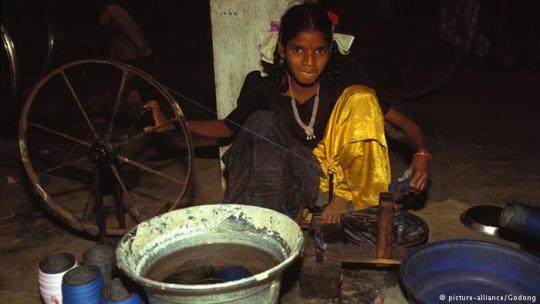
source: http://www.dw.com/en/rampant-abuse-in-tamil-nadus-spinning-mills-study/a-19284995
POOR WORKING CONDITIONS
Excessive working hours, with an average of 12/13hrs a day, six days a week.
"They work at least 12 hours a day, and often it goes up to 16 hours. There is no fixed resting time and the food that is served is monotonous. This, in turn, leads to the women becoming quickly weak."
“I was promised that I could continue my studies, but instead was forced to work for 12 hours in a shift. Supervisors torture girls to extract work beyond their capacity.”
Extremely poor working environment.
“I had so many respiratory problems because of inhaling cotton all day. 15 of work hours in such high humidity, heavy noise of machines, claustrophobic rooms, dirty toilets and mandatory night shifts completely spoiled my health. A couple of my friends even had accidents because of exhaustion. They had to quit the jobs in a year or so and never got paid.”
The work is physically challenging, but also dangerous.
"They are also not given any protective gear, leading to injuries time and again.”
Women are sometimes locked in bathrooms or dark basements during audits to avoid poor working conditions being revealed.
One worker aged 16 was promised a job and steady income that would help support her economically desperate family. The working conditions seriously affected her health and she fell sick, but was forced by supervisors to continue working without any medical help. Her condition deteriorated and she ended up in hospital. After her recovery, her dad persuaded her to return to work, but after a few weeks, she begged her dad to take her home saying she would die otherwise, so he admitted her to hospital. However it was too late, and she died a day later.
POOR HOSTEL CONDITIONS
Wardens of hostels make sure workers go to work irrespective of their health. Wardens have also been found to physically beat female workers. In one case, wardens were found inspecting the girls’ sanitary pads to monitor pregnancies.
The hostels are found to be unhygienic, with toilets left uncleaned for weeks and lack of arrangements to dispose sanitary pads- in one study, sanitary pads were found dumped in the corner of every bathroom.
The rooms are overcrowded, with 10-15 workers sharing one room. They often sleep on thin mats, on the bare ground.

source: https://www.thenewsminute.com/article/photo-essay-how-tn-textile-mills-force-girls-bonded-labour-earn-dowry-67781
DENIAL OF BASIC RIGHTS
Extremely poor wages- according to one study, while monthly minimum wage amounts to about 113 euros, workers are paid only about 19 euros.
Workers are denied leave, even in family emergencies. 4-6 days are provided for major festivals, however workers must return within six days. Returning late will result in punishments, including wage deductions and overtime. Some workers have been exploited for more than six months for taking more than the stated days of leave.
Movement is restricted outside of their factory or hostel.
The women have no working contracts, factory identity cards, salary certificates or anything indicating their employment, meaning factories can get away with exploiting and firing workers more easily (no legal protections for workers without official employment, making it difficult to claim their rights e.g. claiming wages they may not be given). In fact, about 70-90% are actually employed as apprentices and remain apprentices, despite the law stating only 10% can be apprentices. This allows factories to keep them as unofficial employees as well as pay them less.
Workers are denied the right to form/join trade unions or demand better working conditions. In a 2016 study, 33/743 mills had a workers committee for workers to express grievances. This is made harder by the fact that they are located in rural areas, away from any existing trade unions and organisations to help.
If management are accused of maltreatment of workers, they go to great lengths keep it quiet. For example, withholding the girl’s wages and pay her only once the family drops the case. In other cases, they make up stories about the girl having an affair, and families are shamed into silence.
SEXUAL ABUSE
Girls in the Sumangali system are extremely vulnerable to sexual abuse. This was publicly exposed in 2016, when an eight-page letter from women in a textile mill was sent to Tamil Nadu’s social welfare officer, describing the abuse they endured.
“He forces himself on us, constantly hugging us and squeezing our breasts…Any worker who resists his advances loses part of her salary. We need this job and don't know who to talk to about the abuse we face everyday. Please help us.”
The sexual abuse experienced by workers was recently brought to the courts of Madras. It was revealed that women were being sexually harassed, with no means of seeking justice and no complaints committees. Horrific accounts included young girls aged 15 being locked in a room and abused by multiple men, and one girl aged 12 who was abused and made to have abortions.

source: https://www.thenewsminute.com/article/photo-essay-how-tn-textile-mills-force-girls-bonded-labour-earn-dowry-67781
SUICIDE
The conditions are so extremely dire, suicide has become frequent in this sector.
One worker recalls an incident she witnessed a year and a half ago, where a young girl threw herself off a roof, after a supervisor pulled down her skirt in front of other workers.
“About 30 of us saw this, but we were scared. Since the police did not file a case due to the management’s pressure, we did not think there was anything we could do.”
In 2016, a 17-year old girl was found unconscious in her room, with wound marks on her body and rope impressions around her neck. She had been working 4 hours of overtime everyday after her 8 hour shift, and was sexually harassed by a male worker. After one year she wanted to leave, but her parents convinced her to complete her contract.
After a report in 2014 highlighted the exploitation of these women under the Sumangali Scheme, the High Court of Madras ordered for it to be abolished. However, despite laws banning the employment of women under 18 years and a minimum wage being set, in reality, little has changed. In fact, a study in 2016 found that in 351/743 mills, Sumangali was still around, under different names and taking different forms.
Mills have begun luring young women into textile mills by promising free education, jewellery and trips abroad. They also encourage and ‘brainwash’ them into bringing their friends to the mills, taking over the job of the agents who would recruit among the villages. In one mill, a noticeboard was found promising workers a trip to a water theme park for every two girls they brought to the mill, and a silver anklet for every five girls.

source: https://www.thenewsminute.com/article/photo-essay-how-tn-textile-mills-force-girls-bonded-labour-earn-dowry-67781
Companies alleged to be involved in the schemes include: H&M, M&S, Next, Diesel, Old Navy (GAP), Timberland, Tommy Hilfiger, Primark, Tesco, Mothercare, and ASDA-Walmart. I’m not suggesting you boycott these brands, but instead inquire about their connection with the Sumangali System, and ask them what they’re doing to ensure their suppliers are not exploiting their workers.
While I have extreme hatred for factory managers and their systematic abuse of female workers, we need to hold these brands to account also. These mills are often subcontracted, that is, the brands sign agreements with one mill to produce a certain amount of yarn, however this mill then signs agreements (subcontracts) with another mill to meet the (extremely high) targets set by brands. This means that it is the contracted factory, rather than the initial mill or the brand, that is responsible for the maltreatment of the workers. This allows brands to avoid any blame or responsibility- hence why literally EVERY brand is out here subcontracting work.
It is absolutely vile that they are exploiting the desperation of impoverished families, knowing that individuals who are struggling to just keep their families fed will be reluctantly endure such conditions in order to meet their near impossible targets, to ensure the survival of their loved ones.

source: https://www.thenewsminute.com/article/photo-essay-how-tn-textile-mills-force-girls-bonded-labour-earn-dowry-67781
Please help us raise awareness of the suffering and strength of these women. Their stories deserve to be told.

source: http://www.thehindu.com/news/cities/Madurai/plea-to-ban-all-forms-of-bonded-labour-in-tamil-nadu/article4976950.ece
References and other important sources:
https://timesofindia.indiatimes.com/city/coimbatore/sumangali-scheme-still-alive-in-new-garb-allege-activists/articleshow/62245582.cms
https://timesofindia.indiatimes.com/city/chennai/looms-repackage-sumangali-to-lure-girls-into-child-labour/articleshow/62435629.cms
https://littleindia.com/forced-labor-prevalent-indian-factory-supplying-hugo-boss-report/
http://www.sify.com/news/sexual-abuse-in-textile-mill-help-us-write-tamil-nadu-women-news-national-qlbmpRabbcdgh.html
http://www.firstpost.com/india/sexual-harassment-debate-rages-but-little-help-for-women-employed-in-unorganised-sector-4216457.html
http://www.dw.com/en/rampant-abuse-in-tamil-nadus-spinning-mills-study/a-19284995
Rahul, N (2017). Gender and caste at work: Evolution of a factory regime under the sumangalfi scheme. Social Change, 47(1), pp. 28-44.
https://www.reuters.com/article/us-india-women-labour/death-of-teenage-indian-mill-worker-raises-concerns-over-bonded-labor-idUSKCN0WJ2BZ
https://www.thenewsminute.com/article/sumangali-scheme-when-marriage-assistance-becomes-bonded-labour-disguise-52320
https://www.solidaridadnetwork.org/sites/solidaridadnetwork.org/files/publications/Understanding_Sumangali_Scheme_in_Tamil_Nadu.pdf
https://www.fairwear.org/wp-content/uploads/2016/06/fwf-india-sumangalischeme.pdf
https://www.thenewsminute.com/article/photo-essay-how-tn-textile-mills-force-girls-bonded-labour-earn-dowry-67781
http://www.indianet.nl/pdf/FabricOfSlavery.pdf
Labour, Exploitation and Work-Based Harm by Sam Scott
#fashion#ethical fashion#ethical#ethicalfashion#fashion factfiles#fashionfactfiles#ohsoethical#oh so ethical#sumangali system#sumangalisystem#garment factory#garment industry#workers rights#workersrights#human rights#humanrights#india#tamil nadu#tamilnadu#labour#exploitation
2 notes
·
View notes
Text
Fashion Factfiles #2: Mass Faintings in Cambodia
Hey guys, finally dropping another Fashion Factfiles post for ya, sorry it’s been so long!
This month I will be highlighting an ongoing phenomenon that has engulfed the garment industry in Cambodia: mass faintings.
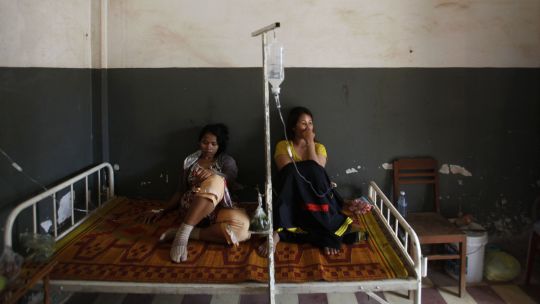
Since the 90s, the garment industry in Cambodia has continued to grow, and is now crucial to its economy, hiring as many as 500,000 workers in 500 factories, and accounting for 95% of Cambodia’s exports.
Due to the cheap labour Cambodia provides, Western brands jump at the opportunity to have their clothes supplied by Cambodian factories, increasing profits. And when I mean profits I mean PROFITS. In fact, according to the President of the Coalition of Cambodian Apparel Workers Democratic Union (CCAWDU), the four major brands in Cambodia, H&M, Gap, Walmart and Adidas had combined revenues of roughly $608bn in 2012, amounting to almost 43x Cambodia’s entire GDP. These brands clearly have more than enough to help ensure the safety of their workers.
But do they? NO.
Instead, workers have been left to suffer under horrific conditions. In particular, there is a phenomenon that has arisen and continues to persist among garment factories in Cambodia, known as ‘mass faintings’. This is where large numbers of workers in a factory simultaneously faint, and it is believed that in total, 2000 workers faint every year.
Just this August, 73 workers fainted simultaneously in a factory supplying H&M, and over the past year, more than 500 workers in four factories supplying to brands including Nike and Puma were hospitalised due to mass faintings. In the most serious episode among these four factories, over three days in November, 360 workers collapsed.
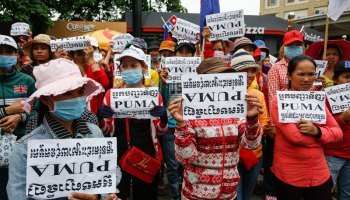
So why is this happening? There are several reasons:
- Excessive hours: Garment workers have no choice but to work long hours, due to expectations to meet high production targets set by brands, and to attempt to top up the low wages they already receive. This often leads to 10-hour working days with few breaks and little opportunity to eat or drink enough. These long hours also means less time to rest at home, or cook nutritious meals required to keep them going during the day. The workers who had fainted in the Nike/Puma factories had been working 10 hours, six days a week, and reported feeling exhausted and hungry.
“Everyday is more and more difficult. The managers say they are losing profits and they have given us higher quotas...Sometimes I can’t sleep at night because I’m so frustrated about work.”
- Poor diet: Workers have a very poor diet, consuming just 1598 calories on average- around half the recommended amount for the physically demanding work they do (3000 calories). In one study, 33% were medically underweight, and 25% would have been diagnosed as Anorexic in the UK. The recommended 3000 calorie diet would require $75.03 a month, but the minimum wage totals to $80, which is expected to meet family, housing, health care as well as food needs, which in reality, would require around $450.18 a month.
- Travel: Many workers do not live near the factories they work in, so take long, dangerous rides to work in cramped trucks, like cattle. Sometimes they must stand for 2 hours straight on these journeys. The stress of this is also thought to contribute to their likelihood of fainting.
- Poor Ventilation and Heat: Factories are found to have no air conditioning, as well as faulty cooling and ventilation systems, causing a lack of oxygen. Sometimes factories do not open their doors. As a result, temperatures reach up to 35C-40C, with workers in the Puma/Nike factories reporting temperatures of 37C. Unlike Vietnams, where there is a factory temperature limit, Cambodia sets no limit. The fact that the majority of faintings occur in the Summer, when it is hottest, makes it evident that this is a crucial factor in increasing vulnerability to fainting.

- Lack of Access to Water: While water may be offered, lack of breaks or cups available make it difficult for workers to have access to drinking water.
- Chemical Exposure and Smells: Mass faintings are associated with the presence of strong chemicals/smells. For example, at a factory producing for Puma, faintings occurred around the same time as hazardous chemical exposure. Some say smoke, pesticides and chemicals used to treat garments combine with the high temperatures to create the conditions that lead to faintings. In one factory, 150 workers passed out after thick smoke entered the factory, one worker explained:
“I heard the explosion. Smoke came into the factory. Workers were afraid and panicked. I ran to the gate to get out. It was locked but I ran to the manager’s door...More and more workers came behind. Other workers could not run to get out and I heard they started fainting.”
The President of the Coalition of Cambodian Apparel Workers’ Democratic Union holds the mass fainting as a product of the hot weather, and the fire in the generator which smelled like poison combined.
- Short-term Contracts: Workers report being threatened into working overtime, with managers stating that the refusal of overtime will result in their contracts not being renewed. This adds extra pressure and stress on workers, further exhausting them.
- Panic and superstition: The belief that the fainting is the result of possession by spirits has also been found to contribute to the vulnerability of workers towards fainting, as it contributes to the feeling of panic and mass hysteria.
When workers faint, they are sent to the clinic and given paracetamol before being expected to return to work. One way workers try to prevent themselves fainting and maintain consciousness is with a method called ‘coining’, where coins are used to lightly bruise the skin. This stimulates blood flow, bringing blood to the surface, to alleviate heat exhaustion.
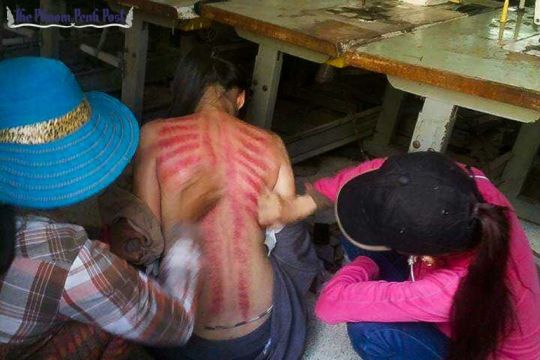
One worker explains her experience of fainting:
“I saw some of the other workers collapse and I felt panicked. I became weak and suddenly I fainted...I fell down and I heard people calling my name, but I couldn’t respond, I couldn’t open my eyes.”
She regularly feels weak and dizzy at work. The factory’s cooling system does little to reduce the temperatures, and she is constantly hungry, thirsty and stressed.
“We are constantly at the point of fainting all the time. We are tired and we are weak. It takes only a few small things to tip us over the edge.”
As most of you are aware I could go on for ages about this, but I’ll leave it at this. Links for all the sources I used are below. Please if you see something with ‘Made in Cambodia’ on the label, don’t be afraid to tweet the brand, or tweet any of the brands I’ve mentioned above, asking if they’re aware of mass faintings in Cambodian garment factories, and what they’re doing about it. They fear consumer power so we’ve got to utilise it.
Solidarity to all the Cambodian female garment workers fighting corporate greed, despite everything they have to lose and the suffering they continue to face. Your courage and bravery inspires us and we are with you!
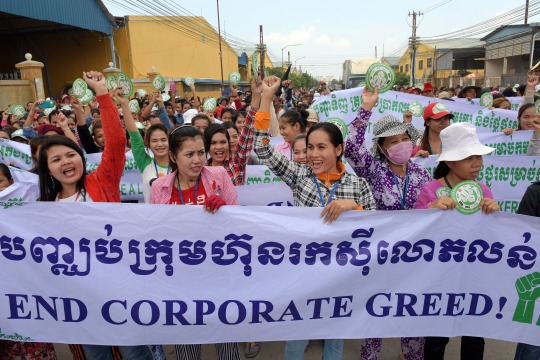
Sources:
https://www.cambodiadaily.com/news/mass-fainting-in-hm-garment-factory-no-problems-found-134172/
http://wwmp.org.za/elitsha/2017/09/22/whats-behind-the-mass-faintings-in-cambodias-garment-factories-whats-behind-the-mass-faintings-in-cambodias-garment-factories/
http://labourbehindthelabel.org/coining/
https://www.theguardian.com/business/2017/jun/25/female-cambodian-garment-workers-mass-fainting
https://www.youtube.com/watch?v=5a9n_0v5rWU&index=3&list=PLwZkSKZLNcdwTmp5W-qY_Hhc2NHSr8Yl_
#cambodia#cambodian#garment workers#garment industry#injustice#workers rights#fashion#ootd#ethical#ethical fashion#ethicalfashion
4 notes
·
View notes
Text
LET’S TALK ABOUT ETHICAL FASHION PLS
Ethical fashion: ‘an approach to the design, sourcing and manufacture of clothing which maximises benefits to people and communities while minimising impact on the environment.’ Ethical Fashion Forum
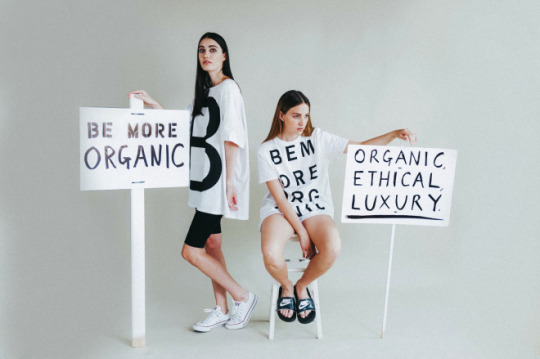
(Source: https://airrclothingblog.com/2015/03/06/brand-profile-beaumont-organic-available-at-airr-clothing/)
Wow. Where do I begin?
Actually let me begin with this disclaimer: ANY CRITICISM I MAY MAKE ABOUT CERTAIN SITUATIONS/ORGANISATIONS/GROUPS OF PEOPLE IS NOT AN ATTACK ON THESE PEOPLE AS INDIVIDUALS BUT THE SYSTEM FROM WHICH THEY HAVE DERIVED FROM.
K lets begin.
So I guess you could say I’ve been in/observing the ethical fashion scene for about 4/5 years now. During my first year of uni I realised I needed to go beyond complaining about the oppression of garment workers and start acting, and decided to create a blog called Oh So Ethical. My first thought was to create an ethical fashion blog where I styled outfits I’d made out of secondhand clothes, and raved about the latest ethical brands I loved (I cringely called this ‘Fridays Five Ethical Faves’ ffssssssss). After a while I stopped, but went back into it when my cousins and I realised we needed somewhere to share our opinions, ideas,and hopefully inspire others to think and act ethically- and so we rebranded Oh So Ethical and made it what it is today.
At the beginning I tended to place a large emphasis on ethical brands that we liked and bought from. ‘Ethical is the new black’ was my favourite slogan. However, as the years have gone on, and with more interaction with activists, friends, random people I’ve met, and having witnessed the ongoing exploitation of garment workers continue year after year, I have become extremely cynical of the effectiveness of ethical brands, particularly ‘ethical fashion’.
Indeed, through learning from others and seriously thinking about ethical fashion, questioning whether it is an actual means of empowerment for workers,and if it will ACTUALLY dismantle the system of oppression, I have come to a conclusion:
It’s a resounding NO.
Here’s y.

(Source: https://fashionindustrybroadcast.com/2017/06/12/sustainable-ethical-fashion-faux-has-never-looked-so-real-or-this-stylish/)
I recently read an amazing article in The Guardian by Martin Lukacs, which really helped me understand the underlying processes behind ethical fashion. To sum it up, we live in a neoliberal society, where we are taught to act and thrive individually. When it comes to activism, we are taught to focus on how we, as individuals, can change the situation, and are made to feel personally responsible and guilty for the world’s problems. Due to the guilt created by this individualism,we feel the need to relieve our guilt by acting in a way that makes us feel better, and as we are seen as consumers (as opposed to citizens) within neoliberal ideology, our means of creating change is through buying and consumption e.g. buying ethical clothing.
While these individual actions are undoubtedly important, by placing such a great emphasis on individualistic activism, we are intentionally being steered away from focusing on the real perpetrators at large: CORPORATIONS- who are out here exploiting workers and the environment, and continue to get away with it. In turn, we are made to neglect the fact that we need to be targeting the root causes of exploitation, including the deregulation of state power that allows corporations to get away with murder, and the capitalist system that puts profits over people, encouraging exploitation and greed. By steering our attention away from such issues, corporations can continue making profits and getting away with their bullshit, while we discuss the pros and cons of bamboo leggings. (see more: https://www.theguardian.com/environment/true-north/2017/jul/17/neoliberalism-has-conned-us-into-fighting-climate-change-as-individuals)
Author of Stitched Up: The Anti-Capitalist Book of Fashion’ Tansy Hoskins provides a similar discourse, adding that we are encouraged to trust in capitalism to make change and better the world; that companies can be made ethical through our consumer actions. However, the contradiction is that corporations have only become stronger and continue to exploit workers/resources, despite their greenwashing and attempts to come across as ‘green’ and ‘sustainable’. More shopping is not going to free workers from this system. By using consumerism as a sole means of empowering workers, we are utilising the very system that has led to the exploitation of workers in the Global South, namely capitalism, without even acknowledging or striving to challenge or dismantle it. (see more: https://oxfordleftreview.com/olr-issue-14/tansy-hoskins-neoliberalism-and-fashion/)
In an insightful article on White Saviour Complex and Fair Trade, Bani Amor delves into the colonial connotations of attempts to ‘save’ the world via ethical companies, which are argued to share parallels with the colonial activities of the West going into the Global South and attempting to civilise the ‘Other’ with its saviour tactics, thus ensuring domination over the GS and its resources, validating supremacy. I’m not saying ethical companies are going to these countries on colonial conquests, but we really do need to understand the historic relevance of colonialism in interactions between the Global North and South such as these. If you go to these countries, get products made, sell them in the name of ‘liberating workers’ while not giving them a say or listening to them, and continue to stay silent on the structural system that has resulted in your existence as an ethical brand, you are falling into dangerous territory.
The article also reviews research on cause-related marketing, which is basically when corporations and nonprofit charities combine to promote sales and causes simultaneously. By tying serious social causes such as poverty and exploitation to making profits, this results in the depoliticising and downplaying of such causes, and provides an undignified, extremely simplified solution to a complex, very dire situation.
Finally, one pivotal point made is the fact that coloured women, through this process of ‘saviourism’ are made both “hypervisible, but also invisible- ‘seen but not known’”. Their existence is highlighted, but they are simultaneously being silenced, as workers are spoken over, dehumanised and patronised by brands and movements that are supposed to be ‘empowering’ them. (read more: https://www.bitchmedia.org/article/spend-save)
In general, the ethical fashion movement tends to solely focus on how we can individually change the industry and ‘save’ workers in a way that utilises and continues to prop up the very system that is screwing workers over in the first place, conflicting with its ‘empowering’ rhetoric.
GREAT SO WTF DO I DO NOW THEN MAYISHA.

(Source: http://www.vqronline.org/reporting-articles/2014/04/ghosts-rana-plaza)
Okay so I know I’ve painted a very dull image of ethical fashion, and I know not all ethical brands are the same, etc etc. However, when the industry constantly paints ethical fashion as a positive means to an end, neglecting the issues surrounding ethical fashion, alternative viewpoints are needed.
I get a lot of people asking me for advice e.g. about ethical brands, how to be more ethical etc. Ultimately we want our goods to be made by workers who were treated fairly. Personally, I stick to secondhand- it’s cheaper for me and helps reduce waste in landfill. I do like ethical clothing, and knowing where my clothes/jewellery has come from, but if I do buy ethically I will from now on be seeing what that brand is doing to support garment workers and in calling out corporations, so if you’re an ethical brand prepare for a QnA sesh with ur girl.
One thing I would advise is to not simply boycott the high street- this comes from trade unionists and garment worker activists in Bangladesh. They want to produce garments and a source of income, they just don’t want to be tortured in the process (obviously). At the same time, we cannot deny that our excessive consumption is part of the problem, so if you need a new jacket- please just buy your jacket and not a jacket, 5 tops and 6 dresses because they were half price- really think about your purchases. Being a ‘shopoholic’ is a cute insta aesthetic but its seriously impacting the environment and feeding the system of worker exloitation.
Also acknowledge that a lot of people simply cannot afford to buy ethically, and should not be made to feel guilty for going to primark to buy jeans.
One thing I also really want to highlight, as you would have probably guessed from the blog, is that our activism is not limited to our purchasing. We need to be vocal, we need to be out there demanding change from corporations, calling them out, exposing them etc. Something as little as a tweet, an email, and insta post can go a long way guys. I know its not in fashion to support such movements (pardon the pun) but we really have to keep pushing- we cannot afford to wait for another Rana Plaza for us to take action.
This might piss people off. I’m sorry. But understand that a few years ago I was the same as the very organisations and brands I’m talking about, and it took criticism like this to understand that I needed to rethink my activism if I were to truly create change. Plus, you feel pretty helpless after hearing of a factory fire every other week, another worker protest because factory owners didn’t pay their workers that month, stories of sexual abuse of young females from management, refugees being exploited, masses of workers fainting simultaneously, and NO ONE CARING. Not even the very people who by default should be sharing and raising concerns about these issues. It’s surreal.
We have groups and regular discussions on twitter that enable ethical brands to get together, support each other and discuss how we can promote ethical brands and use them etc. It’s nice how such elaborate forms of unity can be created surrounding ethical branding but little is done to address the very problems that has led to the reason these ethical brands exist, and how to put an end to worker exploitation. Again, we are steering towards ‘solutions’ that aren’t actually solutions, but are utilising capitalism and perpetuating the neoliberal stance that we need to individually create the change.
BUN THAT SHIT.
Things are going to start changing.
We are not only going to change the world with our individual practices, we are going to change the garment industry in a way that emphasises our solidarity and support for garment workers, creating a mass solidarity movement. We are going to call out corporates when we clock their messy moves and let them know as consumers we don’t f*ck with them unless they treat their workers with dignity. We are not going to buy our way to change, we are going to collectively DEMAND it.
We have no choice but to.

(Source: http://thechronicleherald.ca/world/1126316-bangladeshi-garment-workers-protest-on-may-day)
#fashion#ethicalfashion#ethical fashion#ethical#ohsoethical#ootd#garment industry#garment workers#garmentworkers#garmentindustry#workers rights#workersrights#rana plaza#ranaplaza#bangladesh#capitalism#neoliberalism
1 note
·
View note
Text
October Exposé: Coca Cola
Hey guys! Happy October and welcome to another monthly exposé!
This month I am exposing a worldwide fave, a multinational corporation that brings joy and cavities to people of all ages, races etc.
COCA-COLA (CC)

Can’t lie, I’m not surprised by the content I found regarding their corrupt past and present. However, I am really quite shocked by the extent to which CC has destroyed lives all around the world. Article after article, there’s a lot to take in.
In order to make this a bit more digestible, I’ve summarised everything to the best of my abilty, and provided links if you’re eager to find out more.
Anyways, let’s get straight into it.
Water
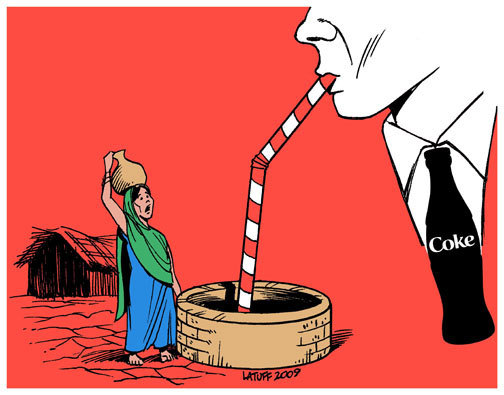
Bottling plants require a large amount of water, 1.9L of water required to make one small bottle of Coca-Cola. This doesn’t even cover all of it, as growing the sugar cane used in their drinks results in an extra 400 litres of water to make a bottle of Cola.
CC has faced crisis in India, due to their mismanagement of water in the country. It has systemically rinsed villages of their water resources, leaving them with little or toxic water resources. It continues to operate bottling plants in places where the demand for water already exceeds the amount of water available, and proposes new plants in areas where communities already have limited access to safe drinking water.
However, activists have been taking a stand against Coca Cola. And they’ve succeeded:
Tamil Nadu
In March this year, it was reported that 1m traders in Tamil Nadu, India, were boycotting Coca-Cola and Pepsi drinks after two Indian trade associations called them out for exploiting India’s water resources.
“These foreign companies are using up scarce water resources of the state,” K Mohan, secretary of the Vanigar Sangam, one of the associations supporting the boycott.
Indeed, in January, Tamil Nadu had been declared by officials as ‘drought-hit’, with many villagers suffering as a result.
“[Foreign companies] are exploiting the state’s water bodies to manufacture aerated drinks while farmers were facing severe drought.” Vikram Raja, president of the Vanigar Sangam trade association.
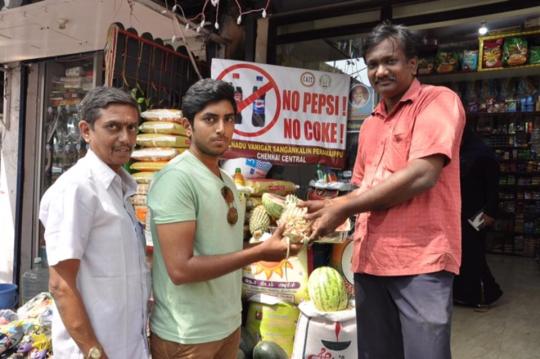
Kerala
This bold boycott spread to Kerala, where traders also decided to ban the sale of Coca Cola and Pepsi. It was decided that when the boycott was officially approved, sales of beverages and tender coconut produced by locals would be promoted instead. The government was in support of this, and stated it would further restrict the use of groundwater at Palakkad, Kerala.
The region of Plachimada in Palakkad was particularly affected by CC’s activities. A bottling plant was built there in 1999, and CC were permitted to extract up to 1.5mL of water, as well as extract ground water to meet its demands of 3.8L of water for 1L of cola. This led to a decline in the quality of groundwater, with high concentrations of calcium and magnesium ions in the water. The by-product of this was initially sold to villagers as fertiliser However, in 2003, it was found that it contained high levels of toxic metals and the carcinogen cadmium. These problems were extremely problematic to the people living in this region.
"The area's farming industry has been devastated and jobs, as well as the health of the local people, have been put at risk.”
The reality of the situation can be understood most harrowingly when referring to the account of K Kanniamma, a 70 year old who lived in Plachimada village.
“Before the factory opened here we were dependent on our water requirements on our well. Once the factory opened the water level in the wells started going down.
Initially, we did not know the reason for it. When we used that water, our eyes and skin had a burning sensation. Only then we realised that our water had been poisoned.”
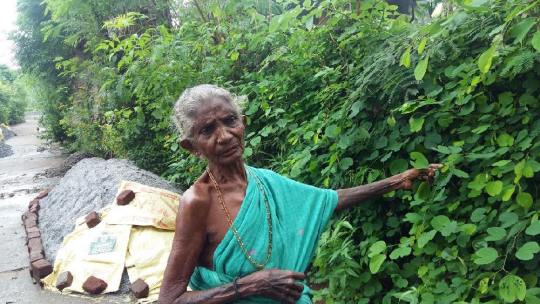
70-year-old Kanniamma recounts a time from before the Coca-Cola factory when they had sweet water in their wells
Public anger led to villagers forming the ‘Coca-Cola Virudha Janakeeya Samara Samithy,’ a body fighting for the closure of the factory in Plachimada, in 2002. Awareness camps and torchlight vigils were organised, resulting in several villagers picketing the factory. As a result, Coca-Cola slapped charges against the leaders.
Listening to the locals, the local self-government organisation (the Perumatty Panchayat) refused to renew CC’s license on account of the exploitation of natural resources thet had affected the public. However, CC then approached the government’s Local Self-Government Department, who overruled the banning of their licence, and allowed them to continue its operations, as long as it found alternative sources of water supply. Members of the Coca-Cola Virudha Janakeeya Samara Samithy continued to be active and in 2004, the plant in Plachimada was shut. Finally, the 12-year old case reached closure when Coca-Cola gave up its license, stating that it did not intend to resume production from Plachimadia. The activists had succeeded.

But wait, it gets even better.
In March 2010, a High Power Committee established by the state government of Kerala recommended that CC be fined the equivalent of $48m for damages caused as a result of the company’s bottling operations in Plachimadia. The report stated:
“It is obligatory that they pay the compensation to the affected people for the agricultural losses, health problems, loss of wages, loss of educational opportunities, and the pollution caused to the water resources.”
The report clarified that the compensation suggested did not include damages caused by the reduction in water, and that such damages must be assessed.
The report also agreed that Coca-Cola should be held criminally liable for its actions in Plachimada.
India’s activists have proved the power of the people. The very fact that they got their governments to stand up against a multinational corporation such as CC is honestly one of the most inspiring things I have ever read.
Sugar Cane
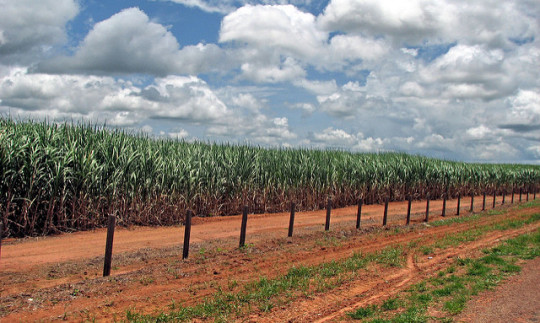
According to findings from this year, CC made limited efforts to tackle forced labour risks in their sugarcane supply chain. This includes a high risk of debt bondage imposed on workers in India and human trafficking risks in Guatemala.
For example, CC was unable to provide an example of grievance procedures carried out (procedures where workers could complain about working conditions) when labour abuses were identified. This indicated that workers/suppliers were not properly instructed on complaint procedures. There was also little law enforcement or contracts to protect workers.
Agricultural workers, particularly migrants were most at risk. Indeed, Brazil and India, the two largest sugarcane producers in the world, rely on mostly migrants and rural workers with little education. Workers manually harvest sugarcane under hazardous working conditions, long working hours, and low wages. Lack of language skills and education leave these workers further vulnerable to exploitation and deception over work and wages.
CC was unable to commit to its agreement in 2013 to disclose the names of all its direct sugarcane suppliers within three years. This would enable researchers to conduct extensive research regarding the working conditions under CC’s suppliers.
Israel

CC has been a staunch supporter of Israel and it’s illegal occupation of Palestine.
In 2009, CC hosted a special reception at their headquarters to honour General Benjamin Ben-Eliezer, who served as Israeli Defence Minister under Ariel Sharon and was in charge of the storming of a refugee camp in 2002, leaving hundreds of Palestinians dead.
Every year, CC financially supports the American-Israel Chamber of Commerce Awards which honors companies that have contributed most to the Israeli economy. In 2009, a CC sponsored award went to the lobbying group AIPAC for its lobbying of the American Senate to reject the UN call for immediate ceasefire and support the continuation of the Israeli assault on Gaza.
Most recently, it has been operating in Atarot and Shadmot Mehola illegal settlements. Israel has been building illegal settlements on Palestinian land since 1967, after it illegally occupied Gaza and the West Bank. This inhuman practice violates international law, and continues to destroy Palestinian lives.
In addition, CC has built a bottling plant in Gaza, which is under siege. This is a problem, as Palestinians in Gaza face a chronic shortage of freshwater, and access to water is limited to 6-8 hours for 1-4 days a week for Gazans. Inevitably, this raises questions regarding the amount of water that is left for Gazans after CC has extracted large quantities from the area. There is also concern regarding the factory’s electricity supply, as the only power plant in Gaza is only able to supply 30% of the population in irregular intervals. It has been indicated that Coke will be given preferential access to water and electricity, and will also be allowed the passage of necessary materials, while essential building materials for hospitals are barred. It is clearly not about creating jobs for Palestinians- if CC truly cared, they would call for the lifting of the siege on Gaza.
Moreover, it has been revealed that Coca Cola sent thousands of dollars ($13,850) to Im Tirtzu, an extremist, pro-settlement Israeli group. This group has described the Nakba (literally translates as ‘the catastrophe’- where an estimated 750,000 Palestinians fled or were expelled from their homes and hundreds of Palestinian towns and villages depopulated and destroyed) as ‘rubbish - a collection of tall tales and myths’. They have also launched smear campaigns against Jewish critics of Israeli policy, accusing them of being ‘planted’ by anti-Israel groups for propaganda and spying.
For more info on Coca-Cola’s history with Israel and Zionism hit up http://www.inminds.co.uk/boycott-coca-cola.html#f48
Orange groves
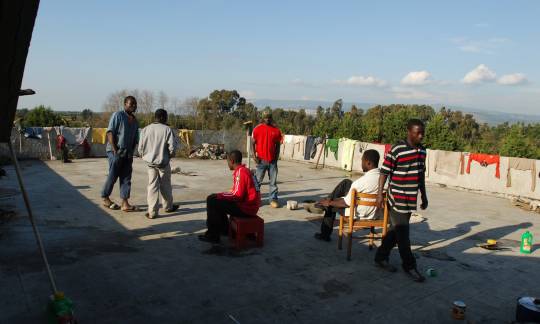
In 2012, an investigation found that thousands of African migrant workers were being exploited in Italian orange groves. Coca-Cola is one of the major buyers of concentrated orange juice in Calabria which it uses for its Fanta brand in Italy. Many of these workers were refugees who had made the journey across the Mediterranean. They were found earning as little as £21 for a days picking in the orange groves, and that many lived in slum conditions in makeshift camps without power or sanitation, and fell prey to gangmasters who in some cases charged a fee for organising their picking shifts. Pietro Molinaro, head of Coldiretti Calabria, the regional branch of Italy's national farming union, claimed that previous attempts to raise the issue of low prices and its link to poor working conditions with Coca-Cola had not received a response.
"This area is facing a big problem: the price big companies pay for this juice is not fair. All in all they force the small processing plants in the area – those that squeeze oranges and produce concentrate – to underpay for raw materials.”
Human Rights Violations
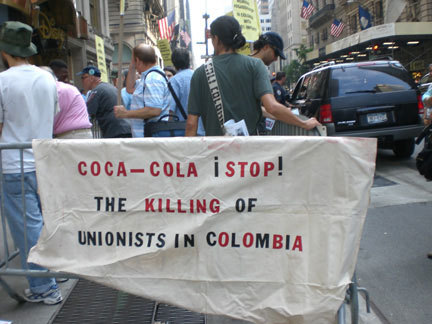
Coca-Cola has a very dark past regarding its human rights violations, and the murder of activists.
Coca-Cola is accused by Colombian courts of financing terrorism for their ties with the now disbanded paramilitary group United Self-Defence Forces of Columbia, hiring hitmen from them between 1990 and 2002 to kill at least 10 trade union leaders who were trying to organise at CC plants. The paramilitary group was responsible for a number of massacres, human rights abuses, kidnappings and extortions that resulted in the displacement of thousands of Colombians.
The human rights violations continue. For example, On June 25, 2015 thugs killed retired Coca Cola worker Wilmer Enrique Giraldo. Wilmer had been injured at work, was forced from his job, received death threats, and fled in fear to Medellin. Luis Enrique Girado Arango, his father, also worked for Coca Cola and also belonged to a trade union. Paramilitaries assassinated Luis Enrique Girado in 1994.
For more info regarding CC and their attempts to silence trade unions and workers’ actively fighting for justice against CC’s exploitative practices around the world, check out http://www.iuf.org/ccww/?q=taxonomy/term/99.

So there you have it. A whole range of crimes committed by just one corporation, destroying lives across the world. It is pretty dire stuff, but we must not and cannot respond with despondence. We must utilise our anger and sadness with ACTION, and I don’t mean going around breaking shit, I mean making sure you CALL COCA COLA OUT. Multinational corporations are dependent on consumer approval, so to let them know that you, as a regular consumer, are disgusted by their actions- this can have a HUGE impact.
Below are the contact deets you can use to message them and ask them what they’re doing to ensure the safety and security of their workers and those affected by their actions.
Twitter: @CocaCola
Facebook: https://www.facebook.com/cocacolaGB/?brand_redir=40796308305
Insta: @cocacola
Contact form: https://contactform.coca-cola.co.uk
Phone Number: 020 8237 3000
Catch you for the next exposé and remember BUN COCA COLA 2K17 XXXXX
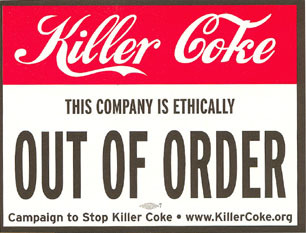
#coca cola#coke#workers rights#human rights#amnesty#labour#refugees#india#exploitation#ethical#ethical issues#oh so ethical#boycott#palestine
2 notes
·
View notes
Text
September Exposé: Louis Vuitton
Hey guys! Another exposé and this time it’s slightly different.
Generally, there is a wide assumption that, due to the hugely excessive price tags luxury brands place on their products, more money is invested in fair wages, safe work conditions, ethically sourced materials etc.
NAH B.
This month, I’m going to prove that this is not the case, by exposing a rather well known luxury brand…
LOUIS VUITTON

We see our faves wearing their attire, the A list models stunting on the catwalk in all LV everything, their over the top blockbuster-esque adverts that make me think wow is it really that deep. But don’t be fooled by the glitz and glam of it all.
From torturing animals, to poor working conditions, to refusing to disclose any information regarding their supply chain, its time we digged a lil deeper into why we need to be wary of luxury brands such as this one.
P.S. I really struggled to get the line ‘Louis Vuitton under her underarm’ out of my head during this whole process #pray4yisha
ANIMAL CRUELTY
Firstly, I disagree with the murder of animals for the sake of fashion. It literally makes no sense to me, is messed up, and cannot be justified.
Obviously then, I was absolutely horrified when I read and watched the extent of the torture animals are enduring to provide the materials LV use for their products. I’ve linked the videos, but be warned, they are extremely graphic and hard to watch.
Rabbit farms:
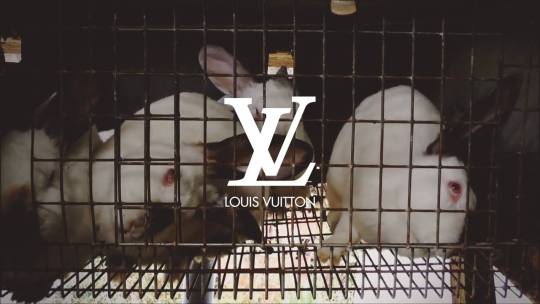
In 2014, the animal welfare campaigning group Last Chance for Animals released research they had been conducting for two years on 70 rabbit farms in Spain, from which high end brands including LV had sourced from. Rabbits were found confined to tiny cages with unstable flooring for their entire two year lives and workers were found “callously bashing sick rabbits to death.” The crippled, diseased and severely wounded rabbits were left to suffer with no medical treatment. Sometimes farmers strangled baby rabbits and left them to die. Honestly, the video is absolutely heartbreaking, I literally cannot understand how such behaviour can be normalised and practiced so carelessly. https://vimeo.com/105515629
Crocodile farms:

(I actually made the decision to make a post on LV after reading about this particular case in Tansy Hoskins’ ‘The Anticapitalist Book of Fashion’- a great book!)
Earlier this year, PETA bought a stake in Louis Vuitton’s owner LVMH, to pressure them to stop using crocodile skin, and giving them the right to attend shareholder meetings and question the board.
This comes after an investigation in crocodile farms in Vietnam, where tens of thousands of them are raised and killed to make ‘luxury’ leather bags. They found crocodiles living in crammed filthy pits, hacked apart and left to die. Workers electroshocked crocodiles then attempted to kill them by cutting into their necks and ramming metal rods down their spines. The animals shake vigorously when this happens, and can still be alive after having been cut open and left to bleed out. Indeed, experts have found that crocodiles remain conscious for over an hour after their spinal cord has been severed and their blood vessels cut. Can you imagine that kind of pain!? The investigators also witnessed the skin being cut off crocodiles, observing one crocodile that continued to move after being skinned, clearly still alive. In just one farm, 1,500 crocodiles were slaughtered every three months. About 5,000 were kept in concrete enclosures, some narrower than the length of their bodies, and kept in these conditions for 15 months before being killed. https://investigations.peta.org/vietnam-crocodile-skin-farm/
POOR WORKING CONDITIONS IN ITALY
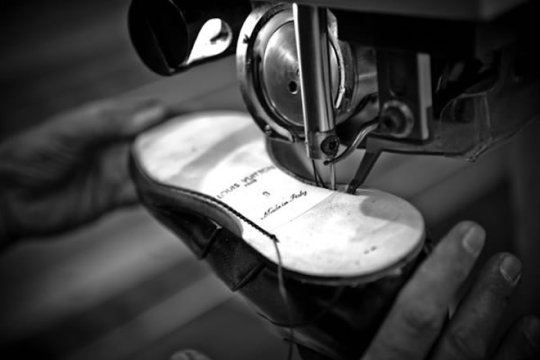
Researchers have found poor working conditions among workers producing shoes for big brands, including Louis Vuitton, in Italy. For example, while a family requires at least €1600 to afford a decent standard of living, workers at entry level were found receiving wages that wouldn't go any higher than €1200, with home workers receiving just €850. The illegal industry is also growing, with subcontracting firms secretly hiring workers at lower prices, and workers receiving contracts requiring them to work excessive hours, or work on day rates which severely cut their wages. This move towards insecure and flexible labour and thus the overall reduction of social protection is the result of Italy competing with countries such as Bangladesh to provide cheap labour to brands.
POTENTIAL RIGHTS ABUSES IN BANGLADESH
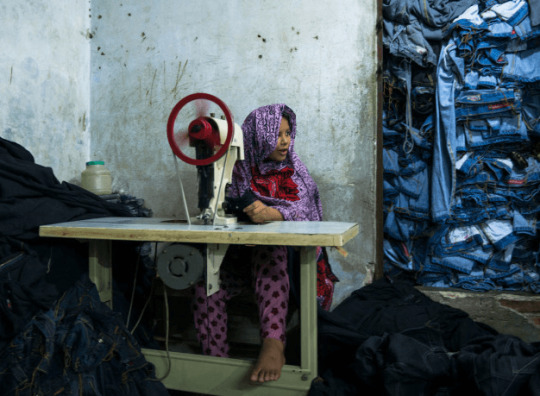
In Bangladesh, two mobile telephone systems have been set up, allowing garment workers to anonymously report signs of human trafficking, delayed wages and child labour. From Jan-June 2016, there were responses from 85 factories (about 3% of sector), and Louis Vuitton was found to be among many brands who sourced from these factories. Altogether, 5200 workers dialled into the system, reporting at least 500 incidents of child labour. The data found that 20% of the sample were at an elevated or high risk of child labour, while 60% were at an elevated or high risk of fire safety violations.
In particular, one article has reported on workers toiling in leather tanneries in Bangladesh, which provide the leather used to make products for brands including Louis Vuitton. Those working in these tanneries in Bangladesh take high health risks and frequently fall ill, due to the chemicals they are required to use without protective equipment and the laborious tasks required of them. Workers are found suffering from chronic skin diseases, respiratory illnesses and gastric problems, however continue to work in these conditions, due to their desperate financial situation. There is also concerns regarding the number of young people found working in these tanneries, including a 13 year old who was found working 10-hour days.
“Every month I am ill. Any time I can get sick because this environment is so bad, but I don’t have any other employment options.” Mohammed Belal- a 30 year old tannery worker who has worked in leather tanneries since he was 10, he suffers from gastric problems and headaches
HIDING THEIR ABUSE
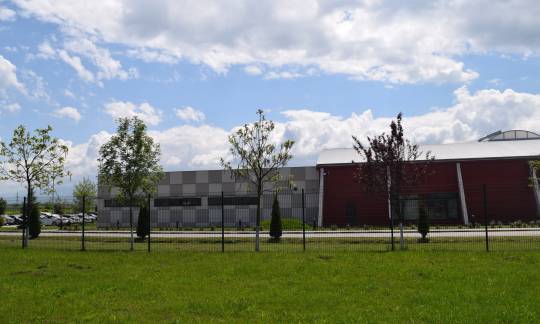
You may notice that this exposé is shorter than previous ones. That’s because Louis Vuitton is hiding pretty much EVERYTHING. They refuse to disclose information regarding their supplies, their main production countries, nor do they disclose the names and addresses of their supplier factories. Indeed, Louis Vuitton and many other luxury brands are rated very low in terms of transparency, at just 15%. This allows them to get away with much more than is probably mentioned in this post. We are even told to assume the worst, considering there is literally no information on their website regarding sourcing or labour standards policies.
In fact, this was highlighted in an attempted investigation by The Guardian. They found that many of LV’s shoes that were stamped as ‘Made in Italy’ were actually made in Transylvania, in secret, hidden factories. Management apparently make great efforts to avoid LV factories turning up on a Google Search. The factory they attempted to investigate had no mention of LV, just a shadow of the Louis Vuitton checkerboard print on the factory walls.
While these shoes were made in Transylvania, they were ‘finished’ in France and Italy (soles are added). This is because, according to European parliament laws, the country of origin for a product is the one where the items underwent “the last, substantial, economically justified processing”.This means that, by having the soles added in Italy or France, LV can have that prestige ‘made in Italy/France’ title on their products, while exploiting the low-wage labour in Romania, where a worker’s earnings for six months is equal to a single pair of mid-priced Louis Vuitton leather court shoes (idk what they are either).
As the Guardian researchers came across a big glass window overlooking the factory floor, with hundreds of workers inside, they were quickly ushered away from the glass and the factory visit was then abruptly ended.
So there you go. It’s important to note that most of these criticisms apply to the majority of luxury brands, so please don’t exempt them from criticism because they are equally as clapped.
What pisses me off the most about these luxury brands is that they continue to exploit workers and torture animals, while being held in high esteem by society and the media, as though to possess anything by these criminals, or be associated with them in anyway is a sign that you have ‘made it’ or have safely secured a spot in the upper echelons of life. There is nothing prestige or distinguished about skinning crocodiles alive or hiding your workers so no one knows about the abuses you’re committing just for you to become one of the most profitable brands in the world.

Once again, we need to get our voices heard and call them out on their bullshit. Below are ways in which you can contact Louis Vuitton and let them know we are fully aware of their corruption.
Twitter: @LouisVuitton_UK @LouisVuitton
https://www.lvmh.com/contact/
Insta: @lmvh
Sources:
https://www.fashionunited.com/fashion-news/fashion/fashion-labels-deny-sourcing-from-horror-fur-farms-in-spain-20141709497081
https://investigations.peta.org/vietnam-crocodile-skin-farm/
http://www.triplepundit.com/2016/10/early-warning-systems-reveals-child-labor-bangladeshs-garment-industry/
https://www.theguardian.com/business/2017/jun/17/revealed-the-romanian-site-where-louis-vuitton-makes-its-italian-shoes
https://issuu.com/fashionrevolution/docs/fr_fashiontransparencyindex2017
http://www.independent.co.uk/news/business/news/peta-buys-louis-vuitton-fashion-moet-hennessey-shares-stocks-lvmh-crocodile-skin-products-exotic-a7525631.html
https://cleanclothes.org/news/2015/01/23/italian-factory-conditions-deteriorate
http://www.ucanews.com/news/the-extremely-unhealthy-life-of-the-bangladesh-tannery-worker/70421
4 notes
·
View notes
Text
Fashion Factfiles #1: Cotton Farmer Suicides in India
youtube
The video above was posted 4 years ago. Unfortunately, farmers all over India are continuing to face this reality.
The epidemic of cotton farmer suicides is not a recent thing. Between 1995 and 2013, there is believed to have been 60,750 suicides, meaning an average of 10 farmers taking their own lives every day. Between January and April just this year, Maharashtra, India, reported 852 farmer suicides; an average of seven farmer suicides, reported every single day.
There are several reasons why so many cotton farmers are pushed to the point of ending their lives. However, the majority of these causes, including climate change and lack of micronutrients in the soil, have been exacerbated or caused by a far greater problem farmers are faced with: MONSANTO.
What is a Monsanto
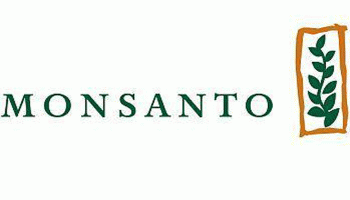
Monsanto is an agricultural company that apparently aims to apply innovation and technology to help farmers, with the slogan ‘producing more, conserving more, improving farmers’ lives’.
Bullshheeeeeeeeettttttt.
Instead, Monsanto are out here trapping farmers in a vicious cycle of debt and crop failure, with an estimated 84% of suicides attributed to their failing Bt cotton seeds farmers are coerced into using.
Bacillus thuringiensis (Bt) is the name of a bacterium that produces proteins toxic to insects. Monsanto produce cotton seeds where the Bt gene is inserted into the cotton genome. This means the cotton produces Bt, allowing it to protect itself from insects that may damage it, in particular Bollworm.
Seems great right? Poor farmers given access to cotton seeds that are easily protected from damage, meaning less pesticides and more healthy crops?
Nah not really.

The Seeds are E X P E N S I V E
GM seeds are expensive, costing up to 4x more than traditional seeds. In fact, since Monstanto’s entry into India, the price of cotton seeds have increased by almost 80,000%!
A big contributor to the financial strain farmers face are the royalties they are required to pay for the seeds. Indeed, Monsanto have gone to absolutely twisted lengths to ensure they can extract as much money as possible from these impoverished farmers. Here’s how they do it.
So generally, the technology of a product and the product itself are separable, however, this is not the case with Bt cotton. Once the Bt gene is introduced into the seed, it becomes part of the seed. This means they are no longer separable. Seems legit right? Cool, so on this basis, the technology fees that they charge for the ‘technology trait’ of Bt should be incorporated with the price of seed. However, Monsanto have made it so that the ‘technology trait’ of the seed and the seed itself are separate, so they can charge both separately. In doing so, they set both at a high rate, increasing the cost of the seeds.
As Monsanto could not sign individual contracts with farmers to secure royalties, they locked in local seed companies to collect the royalties. They must obey Monsanto’s orders, with actions such as changing prices to accommodate farmers’ needs resulting in the potential risk of having their licensing agreement terminated.
Not only this, but every year farmers must purchase new seeds, as these seeds are hybrid cultivars (yeh idk either), which prevent them from being replanted the following year. This means more money spent on Bt seeds. Usually, farmers were able to keep a part of their produce to reuse as seeds the next year.

How else Is Bt Cotton Making Farmers’ Lives Worse?
In many ways.
Firstly, these seeds require much more water than traditional seeds, meaning the crop of farmers who lack access to proper irrigation or farms that are primarily rain-fed (80% of farmland in Maharashtra) often fail to grow the cotton.
In addition, these seeds also require greater quantities of pesticides and fertiisers. Indeed, though the seeds may protect against insects such as Bollworm, they are vulnerable to many others. In fact, it is believed that GM crops are actually more vulnerable than ordinary seeds to pests. For example, in 2015, whitefly attacked and destroyed nearly two-thirds of the cotton crop in Punjab and Haryana, even after the farmers sprayed pesticides repeatedly. Studies support this also, as scientists have found that the genetic engineering of the seeds disrupts the metabolic processes in plants that contribute to resisting insects. As a result, pests that had never affected non Bt cotton have become major cotton pests, compelling farmers to use more pesticides than before. To make things worse, Bollworm has now developed resistance to Bt cotton, so the pest can now damage crops. This has led to the emergence of superpests and superweeds, which are much harder to get rid of. This means even more pesticides are required. After the failing of Bt cotton, Monsanto created another strain, the more expensive Bt II, however this is also now failing to control the pests.
These pesticides contain chemicals that are lethal to the health of the farmers. In fact, many of the chemicals in these pesticides, which are used by cotton farmers without masks and barefoot, are banned in the West. They also contribute to the already high costs farmers must pay to grow these GM seeds.

Loans
As farmers can barely afford these seeds, as well as the chemicals required to tend to them, many turn to loans. However, due to the unpredictability of farming, particularly farming with Bt cotton seeds, this can make it harder for workers to pay these loans back. Moreover, loan sharks are unwilling to give loans unless workers buy GM seeds, as they are thought to produce a greater yield and therefore ensure workers will be able to repay loans. This compels farmers to purchase these seeds. Also, through using licensing agreements, this requires seed companies to only sell Bt cotton seeds. In fact, 95% of India’s cotton seed is now controlled by Monsanto. In 2009 alone, 30 new brands of Bt Cotton were introduced in India, to create ‘an illusion of choice' for farmers. But there clearly is no choice. Genetically engineered Bt cotton is failing no matter how you brand it.
The link between Monsanto and farmer suicides is clear. For example, the highest acreage of Bt cotton is in Maharashtra, where the highest farmer suicides are, and have increased after Bt cotton was introduced.
Ramesh Ghodam killed himself when he was overcome with fears regarding his debts of about $3000. His crop had failed too. His wife survives by taking casual work on other farms when she can find it. ”There is nothing left in my life. The crops are destroyed on the farm, it is all empty land and I can't sow new seeds this season. There's hardly any food at home to cook. I am left alone with my daughter and son."

Men make up most of the farmer suicides, pushing their wives, who have little or no experience in managing a farm, to take over their husband’s work. Due to discrimination, women struggle to find work in the agricultural sector. Indeed, a 2017 report found that while more than 40% of Indian women work in agriculture, they are not recognized as farmers and do not own land, and also have limited access to government schemes and credit. The Indian government provides about $1,550 to families affected by a farmer suicide, but it is rarely enough. One widow, Dharne, received only 30 percent of this amount herself; the rest has been deposited in a bank for her children and will be paid only when her eldest daughter turns 18. Left alone to manage the farm, raise children, and repay debts, Dharne has her late husband's land at her disposal, but she lacks the training and financial support to farm productively. She fears another crop failure and does not have the money to invest in the land.
Indian Activists are Leading the Way
Slowly, as a result of the escalating problem, and thanks to the ongoing campaigning of activists, more is being done to support farmers. For example, in 2014, after Bt cotton crop failed across over 56,000 hectares of land in Karnataka, the government blacklisted the seed company Mahyco, in which Monsanto has a 26% stake. The loss was calculated at ₹235 cr. Mahyco offered the farmers a token compensation of ₹10 crore, which the government rejected, and instead gave ₹35 crore to the farmers on its own.
In addition, after crop failures at the beginning of 2016, the government decided to set controls on the cost of Bt cotton seeds, slashing royalty by 74%. This saw shares of Monsanto lose more than 20% of their value. After they threatened to leave India if prices were capped, the minister of State for Agriculture, Sanjiv Balyan, was quoted to have stated that Monsanto was free to go. PEAK.
Recently the Indian government has been promoting the use of indigenous seeds as an alternative. As a result, in this past year, Monsanto has lost $75 million in royalties from this change.
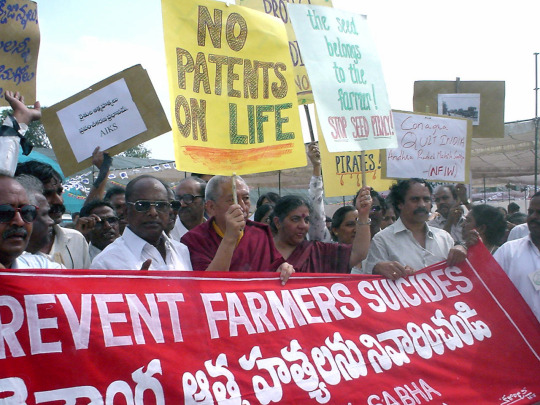
So yes, more change is being implemented, but the problem has not completely gone away. For example, here’s a recent article regarding the conditions in the Punjab.
There are amazing activists on the ground working relentlessly to call out Monsanto and GM seeds.
One particular woman I want to highlight is the legendary Dr Vandana Shiva. She is an Indian scholar, environmental activist and anti-globalisation author, who has been working since ‘87 to expose Monsanto and the crimes they are committing in India. Most of my knowledge of Bt cotton and the conditions of farmers in India comes from her, and I’d like to thank her for opening my eyes to the tragic continuation of this ongoing exploitation, and her efforts to expose the dangers of genetically modified products.

Rest in peace all the souls we’ve lost through this horrific example of corporate greed, and wishing all the strength in the world to the families who have had to face losing their loved ones, particularly the women, who face the burden of keeping together a family as well as work, and endure the ongoing cycle of debt and crop failure.
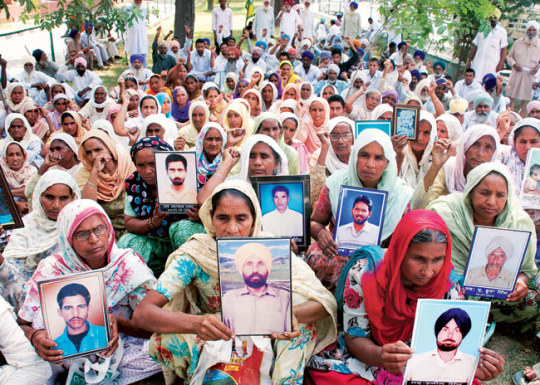
Sources:
http://www.globalresearch.ca/the-seeds-of-suicide-how-monsanto-destroys-farming/5329947
http://vandanashiva.com/?p=317
http://vandanashiva.com/?p=231
http://www.rediff.com/money/report/pix-special-bt-cotton-turns-out-to-be-a-disaster-for-indian-farmers/20151106.htm
http://www.thehindubusinessline.com/blink/know/fly-in-the-face-of-bt-cotton/article8561303.ece
http://www.bt.ucsd.edu/bt_crop.html
http://www.livemint.com/Politics/NdDYRxsayfh2655qOqy7mI/Centre-notifies-Bt-cotton-seed-prices-slashes-royalty-fees.html
https://www.nationofchange.org/2017/03/09/monsanto-loses-millions-dollars-indian-farmers-switch-indigenous-seed/
http://rmgbd.net/india-tightens-rules-over-sale-of-monsantos-gm-cotton-seeds/
http://timesofindia.indiatimes.com/city/mumbai/852-farmer-suicides-in-four-months-in-mah/articleshow/58723266.cms
https://www.theguardian.com/global-development/gallery/2014/may/05/india-cotton-suicides-farmer-deaths-gm-seeds
http://www.worldpolicy.org/blog/2017/08/03/women-struggle-farmer-suicides-india
2 notes
·
View notes
Video
Hey guysssss! Another #thriftythursday all up on your timeline, hope ya like it! Ended up wearing this to the museum and park with my lil cousin and the way I was sweating in the end 😩 still looked cute tho so its all good 💁🏽. Anyway here are the deets: 🌸 black vest from a free cycle event 🌸 jumper from a swapshop 🌸 belt is an old one I've had since my teens 🌸 the sickest space/galaxy skirt my mum bought for me from a charity shop 🌸 Pree the way I forced that jumper to become an off-the-shoulder jumper loll mans off the rails
0 notes
Text
August Exposé: ASOS

Hey guys! Yet another exposé on one of biggest brands that you know and love outcheaa.
I wasn’t actually aware of how deep the situation was with this month’s brand until it was mentioned in a recent Dispatches series that came out regarding their workers’ conditions. Only difference was, many of the workers exploited by this company reside here in the UK.
I’m talking about the one and only…..ASOS!
ASOS is an online shopping site that describes itself as a brand dedicated to ’20-somethings’, offering ‘cutting-edge’ fashion, and selling over 8,000 branded and own-branded products. They have pretty big dreams for their brand, with their founder Nick Robertson stating he wants the company to become the ‘Amazon’ of fashion.
Tbh they’re doing pretty well financially. In the last four months, their retail sales have gone up 32%, and last year revenue grew by 26%, with sales of £1,403.7m.
According to Forbes, they currently have an enterprise value (total value) of $6.1bn.
Bruh.
However, as always, their fortune is dependent on the abuse and exploitation of their workers. Here’s what we found.
Abusive working conditions in their warehouse

All the operations of ASOS take place in a warehouse in South Yorkshire. Buzzfeed (yes I know BF can be weird af but this is actually a crucial study they did) conducted an investigation at the warehouse and revealed the harsh conditions workers endure.
High Targets
Workers are required to meet very high targets set by management, and many struggle to hit their expected hourly performance. For example, pickers must collect 160 items an hour in to meet orders.
Workers are unable to, and often discouraged from, taking toilet and water breaks.
Workers have handscanners attached to them, allowing management to track their working speed. A Tannoy system is used to call out those who are falling behind.
“If you cannot do the target, they come to you every hour and say you have to improve it or you will get a performance management meeting with HR.”
“You are literally treated like a machine.”
Arbitrary Firing of Workers
Workers have had their contracts ended following illness or time taken off to care for sick relatives.
One former worker claimed they collapsed at work and were taken to hospital, only to return home to a letter informing them their contract had been terminated due to four days of absence.
Another worker took a day off to care for their mother who had had an emergency surgery, and was told by their team leader that taking time off was ‘ridiculous’.
Research for Dispatches also found that ASOS workers would be offered permanent jobs after completing 12 weeks, but were laid off before completion of this period.
Wages
ASOS runs reactively e.g. if sales have slowed, they will use promotions and flash sales to encourage customers to buy. Because these promotions are launched at short notice, demand can be unpredictable. Therefore, ASOS relies on their staff to be flexible
ASOS uses a ‘flex’ system that requires workers to be available to work or stand down from a shift at short notice every other week to help the company cope with fluctuations in sales volumes.
As a result, shifts are regularly cancelled at short notice. In some cases, people are given only 3 hours notice that they are going to work longer, or are told they are not needed despite having travelled to work.

Due to this system, many people are owed hours. One worker was owed 100 hours.
Labour MP Owen Smith called the flex system ‘one of the worse forms of zero-hours arrangements’ he had come across.
Research by the Channel 4 Dispatches team found workers being paid as low as £3.08 an hour before expenses. Workers were often hired as apprentices, so they could be paid less.
Strict rules
Staff are prohibited from having cosmetics, jewellery, watches, and electronic devices including mobile phones on them at any time during a shift. One staff notice explains ‘If you are found to be entering the warehouse with any of these items your assignment will be TERMINATED’.
Workers were docked 15 minutes pay for clocking in one minute late, or even on the hour, despite the long queues for workers to enter and exit due to security checks. Buzzfeed calculated that a deduction on their standard hourly wage of £7.45 per hour, means workers could be paid less than minimum wage, £5.59 for 59 minutes of work.
Typically, dismissal follows a verbal warning, a first written warning, and a final written warning, but agency workers said they could be dismissed without notice, following just a verbal warning.
Due to issues with theft, staff are subjected to extensive security precautions. There are random searches during shifts, when visiting bathrooms, and on entering and exiting buildings. Workers are also subjected to Breathalyser tests after injuries, including one worker who was required to take tests after a cut to the finger.
One worker was suspended after she refused to let security guards search her car until she had finished eating lunch.
“We are all being treated like thieves, from the start and all the time.”
The Use of Viscose
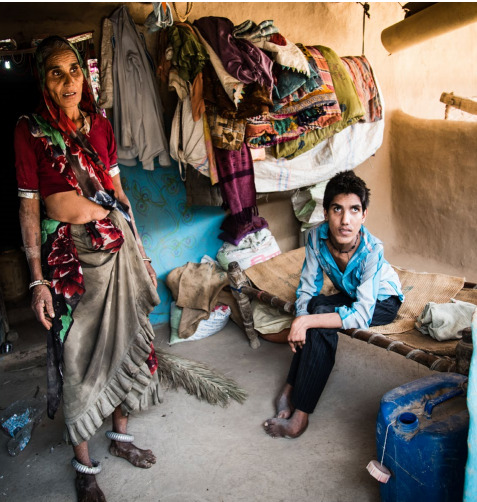
Viscose is a popular man-made fibre used by fast fashion companies. It is produced using a highly chemical-intensive process that is having disastrous environmental and human health impacts
Viscose is commonly manufactured in Asia. In a recent study looking into viscose manufacturing plants in Indonesia, China and India, manufacturers were found dumping untreated wastewater, which contaminated local lakes and waterways. This has led to severe health issues, including a growing incidence of cancer, with villagers no longer drinking from the well water, fearing for their health.
In one lake, the water had turned black, killing fish and shrimps, and stunting crop growth.
The factories have also destroyed many traditional livelihoods, particularly affecting local fishermen.
ASOS was found to be sourcing from two polluting companies in Indonesia and India.
“The water from the wells was never this sour, the government came and marked the hand pumps red and asked us not to drink from them. But what do we do for water? Now just one well supplies water to the whole village.”
Refugee Exploitation

Many clothes sold in Britain are now made in Turkey because the country is close to Europe and is used to dealing with orders speedily.
A recent BBC Panorama investigation found garment factories in Turkey exploiting Syrian refugees.
Most of them didn’t have work permits and were working illegally. Many were earning little more than a pound an hour, and in terrible working conditions, knowing they were being exploited but couldn’t do anything about it.
In one back-street workshop, Syrian children were found working. Here, they disovered an ASOS sample in the office. ASOS accepted its clothes were made in the factory (they found 11 Syrian adults and three under 16 year olds working doing the same work as the adults) but said it was not an approved factory.
One of the refugees told Panorama they were poorly treated at the factory. He said:
“If anything happens to a Syrian, they will throw him away like a piece of cloth.”
So there you have it. ASOS really isn’t all that its making itself out to be. As the target audience, it is crucial that young people like us speak out against ASOS and their human rights abuses. Make sure you get in contact with them, and tell them to fix themselves. Next day deliveries, promotional sales, and fast access to the latest fashion trends seem like reasonable offers, but they are only made possible through the mental and physical torture of workers to meet our demands.
Check the contact deets below:
Twitter: @ASOS
Insta: @ASOS
Facebook: https://www.facebook.com/ASOS
Chat line: http://www.asos.com/customer-service/customer-care/help/?help=/app/home
Number: 020 7756 1000
Change won’t happen unless we demand it.
BUN ASOS.
0 notes
Video
How to style out a trip 101 looll 😩 I swear twirling on carpet is a mission or am I just exceptionally clapped? Probs the latter innit. Anyways here's a cute lil number I'll be wearing to my nans today, and consists of....🌸 a kurta top I found for free at a free cycle event 🌸 a denim shirt I got for free when Asha Charity Shop had a buy one get one free offer 🌸 a high waisted skirt from Age UK in Walthamstow I found for £1 🌸 heart-shaped earrings from TRAID I got for £1 🌸. Hope ya liked it guyss, ngl its a bit mad right bc I've decided to stop buying clothes (its been quite a few months) so I'm recycling all the stuff I've got, with the occasional hand-me-down or items found in freecycle events/swapshops lol. Struggling to become a minimalist I can't lie, how do you guys do it 😩 . . . . . . . . . #ootd #ethicalootd #fashion #ethicalfashion #ethical #ohsoethical #ethicalblogger #blogger #blog #charityshop #charity #thriftshop #thrift #secondhand #london #eastlondon #hide #thrifty #thriftythursday #upcycle #recycle #homemade
#ethical#ootd#homemade#blogger#hide#thriftythursday#thrift#thrifty#charityshop#secondhand#london#recycle#ethicalootd#ethicalblogger#thriftshop#blog#ohsoethical#charity#ethicalfashion#eastlondon#upcycle#fashion
0 notes
Photo
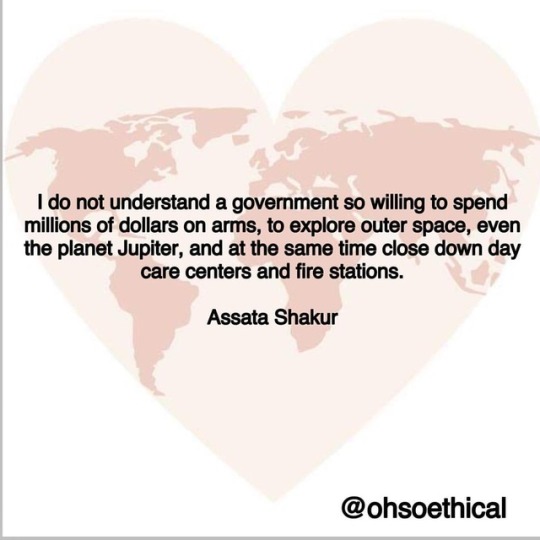
All over social media, we are constantly told that 'we' are the change, that as individuals we can change the world through our actions. And I don't doubt that. However, we must be aware that by focusing our minds on what WE are doing and making us feel guilty about how WE are damaging the world, there are big corporations utilising this distraction and continuing their catastrophic practices that are seriously harming the Earth and our brothers and sisters around the world. We need to acknowledge this clever lil tactic that makes us even more focused on ourselves than the world around us and what is really going on, and can even make us forget the pure intentions behind our actions. . . . . . . . . . #midweekmotivation #wednesday #motivation #motivationalquotes #quotes #inspirationalquotes #inspiration #inspiring #frantzfanon #changetheworld #love #revolution #ethical #ohsoethical #quote #ethicalblog #ethicalblogger #blog #hide
#ethicalblogger#blog#ethicalblog#wednesday#motivationalquotes#inspiration#revolution#ohsoethical#inspirationalquotes#frantzfanon#love#quote#hide#motivation#midweekmotivation#ethical#quotes#changetheworld#inspiring
0 notes
Text
A Can’t of Coca Cola

I used to be addicted to coca cola as a child and teen. I had to drink it almost everyday probably. I’m pretty sure my milk bottle as a baby was filled with coke instead of milk (lol jk). I weened myself off coke and if I ever have it now it’s so disappointing. To be honest that happens with everything that I’ve reduced eating. You have very high expectations of how unethical food should taste if you haven’t had it in while.
But anyway!!!!!! This isn’t about how Coca Cola tastes (rubbish).
This about how Coca Cola acts (Rubbish).
So let’s get straight into it, shall we?
WATER RESOURCES
In India, farmers have protested against Coca Cola and more than a million traders are boycotting Coke and Pepsi. It takes 400litres of water to make a bottle of coke which is about 1690 cups of water in layman terms. Although who can comprehend that.
Well lets see.
If we should drink 8 cups of water a day, its about 211 days of water people!!! Please consider this the next time you order one with your meal.
Considering that India is having one of the worst droughts in 140 years this is not something to be brushed under the carpet. The low levels of water have caused a thermal power station to shut down in February, wilted harvests have led to higher food prices, water has had to be delivered to homes and tens of thousands of people queue daily for water.
It’s not just coca cola that have to clean up their act. Hotels in India are being judged on the type of shower heads they use to conserve water. But Coke and Pepsi are fiercely opposed with hundreds of farmers demonstrated against them when they planned to build a $75 million bottling plant. The authorities approved cokes request to withdraw 4 million litres of groundwater a day. After 4 months of opposition the plan was cancelled. But when Pepsi proposed a plant and were authorised to draw 1.5 million litres a day, not only was it approved but protesters were beaten by the police.
In the past Coca cola bottlers have been closed for extracting groundwater above legal limits and because of water pollution and for violating mandatory environmental requirements.
Protesters have rightly accused the authorities for “acting as agents to foreign capitalists” and that “the common good was being sacrificed to foreign corporations” while “farmers were flying from water shortages and crop failures”.
“Coke and Pepsi are the best-known agents of water privatization and commodification of water,” said Nityanand Jayaraman, a journalist and activist in Chennai. “It is unethical and immoral for a resource that is so vital to life to be commodified. The two companies also stand accused of questionable practices. They make excellent poster boys, framing the issue of water scarcity as an actionable one of private greed causing the decline of a valuable public resource.”
SLAVE LABOUR YOU CAN KEEP
Brazilian government officials have recently accused two coca cola production and distribution centers for treating workers like slaves according to a Reporter Brazil. The following discoveries were made after a 7 months inspections:
179 truck drivers were forced to work 80-140 EXTRA hours per month
They were often denied sleep between shifts
This led to “a variety of physical and mental health related issues, such as “body aches, stress, lack of interaction with family members and almost no leisure time.”
in 2013 and 2014 truck drivers successfully sued Spal (a licenced manufacturer of Coca Cola).
Boycott Divestment Sanctions
The BDS movement has placed a priority on boycotting coca cola because of the factories that are in illegal settlements in occupied Palestine lands, breaking international law. “Coca cola has at large ignored calls to abide by international law.”
“In 2009 the company had also hosted a special reception at the Coca-Cola world headquarters to honour Brigadier-General Ben-Eliezer. Under the presidency of Ariel Sharon, Ben-Eliezer served as Israeli Defence Minister presiding over 2002 storming of Jenin, a refugee camp, leaving hundreds of Palestinians dead.’
Coca Cola’s water and electricity demands are likely to be given preference over the needs of Palestinian people based on reports from around the world which show that their bottling plants usually adversely affect the communities living around them. People in Gaza only have access to 30% supply from the only power plant in Gaza, hospitals run on emergency generators and Palestinians in Gaza face a chronic shortage of fresh water. “Access to water is limited on average to 6-8 hours for 1-4 days a week for the population of Gaza.”
“The settlements help to sustain Israel’s illegal occupation making it impossible to create peace and an independent Palestinian state. The settlements are also considered illegal under international law. Israel’s yearly expansion of settlements has created an extremely difficult situation on the ground for Palestinians. Settlers get away with land theft while attacking and harassing Palestinians on a daily basis for simply being Palestinians.”
Be careful of buying coke disguised as another brand
Here’s a list of coca cola drinks:
sprite
lilt
schweppes
glaceau smartwater
oasis
fanta
minute made
roses
5 alive
dr pepper
powerade
appletiser
honest
kia ora
Further reading and sources
http://www.circleofblue.org/2017/world/right-life-water-drought-turmoil-coke-pepsi-tamil-nadu/
http://www.telesurtv.net/english/news/Brazilian-Coca-Cola-Manufacturer-Accused-of-Slave-Labor-20160826-0007.html
https://www.alaraby.co.uk/english/society/2017/5/7/coca-cola-donated-thousands-of-dollars-to-extremist-zionist-group
http://www.foa.org.uk/campaign/notinmyfridge/
http://www.coca-cola.co.uk/drinks
0 notes
Text
When looking beautiful becomes ugly

Let’s explore animal testing in the cosmetic industry! Note that the above photo is not an accurate representation of animal testing.
While the following arguments are made for animal testing:
animals are a close match to humans
it can help to improve human health and has contributed to saving lives
animals benefit from this so that we can produce vaccines for them
ETC
We have to ask if it is vital and reasonable to test on animals for the cosmetics industry.
Typically rabbits, guinea pigs, hamsters, rats and mice are used for the cosmetics industry.
Tests consist of:
rubbing chemicals onto shaved skin
chemicals dripped into eyes
repeated force feeding to induce
inducing cancer and birth defects
determining the dose of chemicals that cause death
The results on animals can cause
blindness
swollen eyes
sore bleeding skin
internal bleeding
organ damage
convulsions
and obviously death
Is it really necessary? Do we need to have new innovative make up that could possibly harm us, so it has to be tested on animals first.
Basically, should animals suffer so that we can look our best.
Well, that’s a personal choice! Some argue that animals don't have moral judgement so we can do what we like *major eye roll*. I’m sure many of us believe that we should:
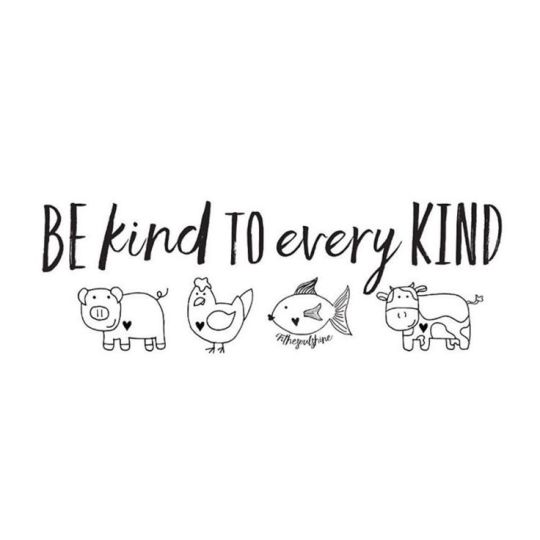
There are alternatives to using animals such as using human reconstructed skin. Or using methods that have already been tried and tested and do not require further treatment.
So why do companies continue to test on animals? Well recently NARS admitted they test on animals and their reason?
“We must comply with the local laws of the markets in which we operate, including in China.”
To which many make up lovers responded “animal lives are more important than reaching another market” and eco beauty blogger Ana Goes Green responded “the China market is a bit of a poisoned chalice for beauty brands at the moment”.
Animal testing has been banned in all 28 EU member states, Norway, India and Australia, so it is possible!
So what can we do? Here is a list of actions that Humane Society International suggest:
Sign the global Be Cruelty-Free pledge to show your support for banning animal testing for cosmetic products and ingredients.
Support us by becoming a Lab Animal Defender with our monthly donor program, or make a one-time donation to help us expand our Be Cruelty-Free campaign and save more animals.
Shop—buy only from companies that say no to animal testing and to newly developed and animal-tested ingredients. Download your own Leaping Bunny Global Shopping Guide.
Contact your favorite brands and urge them to make the leap to cruelty-free. Ask whether the company 1) animal-tests its products or ingredients, 2) purchases newly developed ingredients that have been animal-tested by the supplier, or 3) sells its products to countries like China that may require new animal testing. If the answer to any of these questions is yes, put the product back on the shelf.
Make some noise—follow us on Twitter @HSIGlobal and tweet about the campaign using hashtag #BeCrueltyFree. Like us on Facebook, too, and share our news and actions with your friends.
If you are interested to switching to cruelty free brands check out these guys:
Lush
PHBethical (certified halal too!)
Kat Von D
Two Faced
Bare Minerals
Pixi
Find more below in the further reading section!
Brands who aren’t cruelty free:
MAC
Clinique
Loreal
Maybelline
Please note that you should look further into the brand to ensure they do not support other unethical practices such as supporting wars, racism, unfair treatment of factory workers.
Further reading:
https://www.buzzfeed.com/sarahhan/cruelty-free-makeup-brands?utm_term=.wtZEjMj75#.jj4mG2G1g
http://www.hsi.org/issues/becrueltyfree/facts/about_cosmetics_animal_testing.html
https://axiologybeauty.com/blogs/our-blog/53155205-why-is-makeup-tested-on-animals
http://www.bbc.co.uk/newsbeat/article/40440306/nars-make-up-boycotted-after-cosmetics-tested-on-animals-in-china
https://greengarageblog.org/12-pros-and-cons-of-animal-testing-on-cosmetics
http://animal-testing.procon.org
#make up#makeup#animal testing#animal cruelty#cosmetics#cruelty free#peta#animal rights#fashion#style#fashion news#everday
3 notes
·
View notes
Video
FFS THIS STARTED OFF SO NICELY (minus the zip at the back coming down and my strap being weird) 😩😩😩 I BLAME @miamatangi 😩😩😩. This actually happens a lot when I make these videos where I go eff it and mess around, but thought I'd just upload this one of me unexpectedly losing my shit to M.I.A- Ola bc we're all basically friends on here right- and I just don't care about the fact I genuinely can't do serious ootds, and would rather be the brown taylor swift of dancing. Anyways hope you're all well, here's this week's secondhand outfit deets: 🌸 pink dress passed down to me from Soomaiya who found it in a charity shop (still need to fix that zip loll) 🌸 grey jumper passed down to me from a friend of mine 🌸 necklace found at our first ever swapshop 🌸 denim shirt/dress thing bought from a charity shop, think it was about £4 🌸 hope you like it ❤ . . . . . . . . . #mia #ootd #ethicalootd #fashion #ethicalfashion #ethical #ohsoethical #ethicalblogger #blogger #blog #charityshop #charity #thriftshop #thrift #secondhand #party #birthday #london #eastlondon #hide #thrifty #thriftythursday
#thrift#london#blog#hide#ethicalfashion#charity#mia#ethical#blogger#eastlondon#secondhand#ohsoethical#thriftythursday#thrifty#ethicalblogger#ethicalootd#birthday#thriftshop#charityshop#ootd#party#fashion
1 note
·
View note
Photo
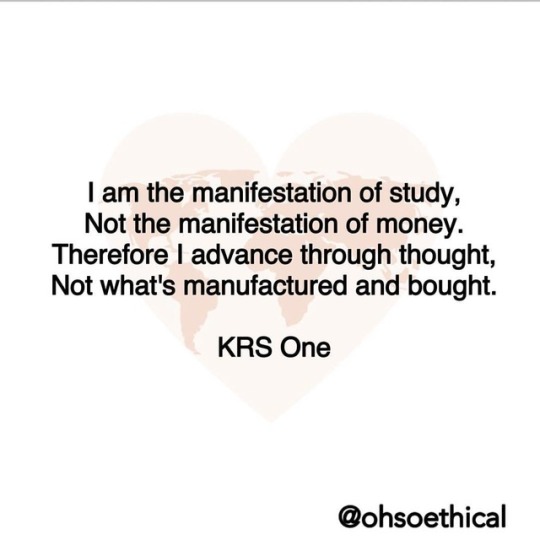
bars for daysssssssssss 💯💯💯💯 let your wealth be determined by your knowledge and the way in which you utilise that knowledge to support the progression of humanity, not by how many louboutins or cars you have- they only provide a short-term satisfaction when you realise the people who rate you for your possessions are temporary, and the happiness you derive from material objects is short-term. Happy Wednesday! ❤ . . . . . . . . #midweekmotivation #wednesday #motivation #motivationalquotes #quotes #inspirationalquotes #inspiration #inspiring #hiphop #knowledgeispower #rapper #materialism #consumerism #krsone #capitalism #changetheworld #love #revolution #ethical #ohsoethical #quote #ethicalblog #ethicalblogger #blog #hide
#motivationalquotes#wednesday#ethical#changetheworld#revolution#hiphop#blog#ohsoethical#inspirationalquotes#rapper#motivation#midweekmotivation#ethicalblog#quotes#inspiration#consumerism#hide#ethicalblogger#knowledgeispower#quote#krsone#materialism#inspiring#love#capitalism
0 notes
Text
July Exposé: Nike Inc
Another month, another exposé.
This month I’m highlighting the reality behind one of the most iconic brands in the world. The majority of us possess something with that glorious tick on it, and I'm sure many of you, like me, get overly gassed about their trainers. I even try to avoid overwearing my hightops (luckily found in a charity shop) just because I fear ruining their pengness.
At the same time, it is crucial that we understand the cost that comes with our consumption of their branded products, and the suffering that comes with it. Many will turn a blind eye, but how can we when we are unwillingly complicit in the situation??
This is exactly why we need to be aware, why we need to call out Nike, and why we need to keep the voices of workers loud and clear. As Nike continues to shroud their voices with a glamorous mask consisting of million dollar ads, embarrassing attempts to pander to certain demographics to show they care (yes I’m @’ing their Nike hijab #cringe), and using A list stars such as Cristiano Ronaldo and Bella Hadid to promote their goods, they are attempting to make us forget our humanity, our basic morals, our belief in basic human rights, and to ‘Just Do It.’
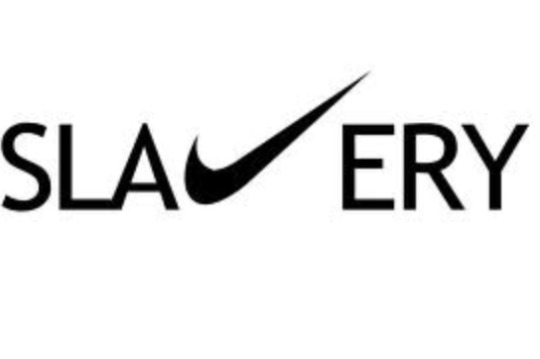
Nike Inc is an American multinational corporation designing, creating, and selling footwear, clothing, equipment, accessories and services. It is one of the world’s largest suppliers of athletes shoes and apparel. In fact, just last year, their revenue totalled $32,376,000, with a gross profit of nearly $15m.
In the ‘90s, Nike underwent harsh criticism after exploitative, sweatshop conditions were discovered in their factories. Ever since, Nike has strived to recover their positive image. Indeed, they were the first company to disclose the contracted factories they used, and according to one of its reports, 86% of it’s factories meet basic standards. Their efforts have succeeded, with many hailing Nike for having led the way for transparency.
However, recent research indicates this is not the case, and that their insane profits come at the expense of worker’s rights and dignity, particularly for the large percentage of women working for them.
Check out some of the most recent findings exposing Nike for its crimes against humanity.
Mass Fainting in Cambodia

Source: http://www.ibtimes.com/mass-fainting-cambodia-factories-brings-countrys-textile-industry-under-scrutiny-1994128
Last month, a report showed that over the past year, more than 500 workers in factories supplying Nike were hospitalised due to ‘mass faintings.’ This is a common phenomena in Cambodia, where a large number of garment workers faint simultaneously. The most serious episode involved 360 workers collapsing over three days. The women collapsing were working 10 hour days, six days a week, and reported feeling exhausted and hungry, while temperatures reached as high as 37C. In one episode, 28 people collapsed while rushing to escape a fire. None of these factories were paying living wage.
Another issue in these factories included the fact that workers were only given short-term contracts, which would only be renewed if workers agreed to working overtime. This only added to the exhaustion of workers.
Working Conditions in Factories in Vietnam
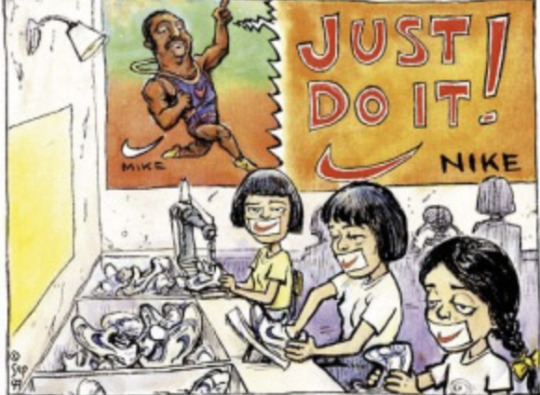
Source: http://theothersideofnike.weebly.com
(These are all findings from 2016)
Living Conditions: Women were found living in squalid conditions near the factories, where they mostly shared single rooms with 2-5 family members.
Wages: Pay is so low workers are unable to meet their basic needs. Four of the workers had been laid off after their factory burned down, so were particularly struggling. The Worker’s Rights Consortium found that the living wage for garment workers here is three times the current minimum wage.
According to managers, Nike’s prices hadn’t kept up with the factories’ rising costs in materials and wages. Indeed, where the price Nike paid for clothes increased by just 2.5%, there was an average 9% increase in wages- putting a strain on the manufacturers.
“Workers still have nothing in Vietnam...Our lives are very difficult.”
Punishments: Arbitrary punishments from factory managers include: Financial penalties and threats of dismissal for making mistakes, not working fast enough, sitting down and lateness. Workers were also intimidated and frequently humiliated by managers. Managers would shout at them, hurl insults or swear at them, or threaten to fire them if they complained about work pressure or low pay. Workers in one factory reported seeing managers throwing shoes at workers, and one witnessed a manager grab the nose of a worker and threaten to slap her if she filed a complaint. The same worker also claimed her manager had called her a “di cho,” the equivalent to bitch or whore. Other workers have also spoken of vulgar names being aimed at female workers.
Ridiculous work rules include a ban on yawning, wearing headphones and having a snack on the factory floor. Workers would be harassed for having a toilet break, including being photographed when they entered and exit the bathroom.
“They’re just so mean,” she said. “‘You’re an adult, make people respect you!’”
Lack of Child Care Provisions: Mothers are having to choose between sending their children to unlicensed child care services considered under qualified or dangerous, or leaving them with family in home villages they could visit only once or twice a year. One mother’s child was poorly, so was sent to live with her family, as she couldn’t afford the hospital visits. During the next two years she only saw her daughter once, “I missed her so much. I cried every night and felt very guilty, but what was I supposed to do?” She brought her back after 2 years but had to leave her in an unlicensed daycare centre for 2/3 of her salary. “I was very worried, because I often hear stories of how they slap children and shout at them.” Her aunt’s 14-month old baby child had choked to death at one of these places.
Inability to mobilise: One worker explained the difficulty with complaining about working conditions: “We have voices, but we can’t really speak.”
The response to complaints was to “make your life harder and try to make you quiet,” and workers also explained that they felt constantly watched by company cameras, which they believed was to deter workers from stealing or organising protests/strikes.
At Hansae factory, the head of the union is the factory’s top human resources manager. This makes it difficult to engage in any discussions with management. As one worker put it : “Any wage negotiation at Hansae would, quite literally, involve management negotiating with itself.”
Audits: During inspections, workers had never been asked by an inspector, whose visits are usually announced ahead of time to workers, how they liked their job.
“They only care about the quality, they never ask us anything.”
Discrimination against pregnant women: When workers are pregnant, they are required to work less hours. However, their targets aren’t lowered and remain the same, meaning they must work extra hard to complete their quotas.
“When you’re pregnant, you only have to work seven hours a day,” she explained, “but they didn’t lower my daily quota, so I have to work extra hard and this is very tough.”
One pregnant worker received a small hazardous work bonus for working in the gluing section, but feared that the chemicals would have a negative effect on her unborn baby.
Some pregnant workers have been fired when it was discovered they were pregnant.
In November 2015, it was found that a supplier for Nike, Puma, Columbia, and Adidas had been laying off dozens of pregnant women. When these brands were informed, Columbia, Puma, and Adidas said they would ask the factory to stop their actions, while Nike made no such commitment.

Source: https://nikesweatshops.org/2017/03/03/just-cut-it-national-campaign-video/
Working conditions: One factory failed to maintain required temperature levels, resulting in workers routinely collapsing unconscious due to overworking and excessive heat. They were then forced to return to work minutes after waking up. Forced overtime, as well as denial of sick leave and toilet breaks was also found, along with exposure to hazardous solvents. One worker was forced to work overtime despite having a funeral to attend.
Working Conditions in Indonesia
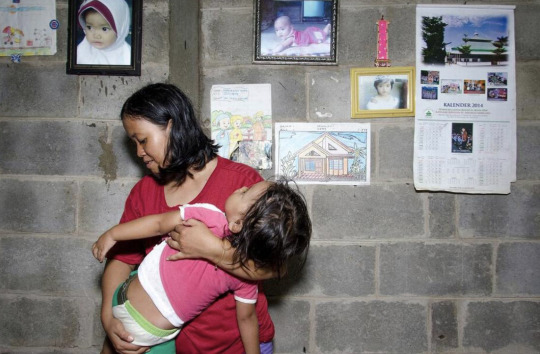
Source: http://www.modbee.com/living/article18774009.html
Working conditions in Indonesia are very similar to those in Vietnam.
High targets: Workers are expected to fulfil extremely high targets and are punished if they are unable to do so. They are given an hour break each day but conditions prevent these breaks from being a period of rest. For example, in one factory each building had only one restroom, with 15 stalls for 850 women, so much of the break was spent waiting in the queue.
“I work in the sewing section, and I’m expected to process 100 shoes per hour. If we don’t meet our quotas, we just get yelled at. Before, they’d be using hands, everything. But now, we just get yelled at. And then the quotas are piled into the next day.”
Waste: Burn piles are found scattered around factories. These are piles of scrap materials from garment factories that are piled up and set on fire. Sections of shoes are found littered everywhere.
Poor meals: Workers are given one meal a day that, despite no longer having maggots in them, smell bad so they hardly eat it.
Health + Safety: Other than fire training, no other safety training takes place.
“Because I work in the sewing section, my biggest risk is to get my hands cut by the needle, and there’s no instruction on how to avoid an accident.”
Long hours: Factory shifts are supposed to be 10 hours, five days a week, then five hours on the sixth day, but workers were routinely not paid for additional hours. When workers filed for the salary they were owed, they were asked by management to only take a bit, as otherwise the factory would be moved to another country (an example of the pressure factories face to please corporations, and the constant fear of losing work to places where wages are lower).
Nike Denies Monitoring Organisations Access to Factories

Source: http://www.civicaction.center/action/thunderclap-end-nikesweatshops
in 2015, the Worker’s Rights Consortium (WRC; the world’s premier anti-sweatshop monitoring organisation) sought access to the Vietnamese factory Hansae. However, the WRC were denied access for 9 months. In 2016, the WRC decided to report on the working conditions in Hansae using offsite interviews with workers instead, revealing some horrific findings mentioned above. These findings had been missed by the Fair Labour Association, a self-monitoring organisation funded by Nike, which was meant to inspect Nike’s factories. Two months after this, Nike responded by allowing them access to the factory.
Although they were granted permission , they were then continually refused future access for investigations in other factories. After the sweatshop scandal in the 90s, universities in America now require Nike to be monitored for its working conditions. However, Nike is the only University of Washington-licensed apparel brand to block factory investigations by one of the university’s affiliated monitoring organisaitons, and is the only collegiate apparel brand that refuses to sign onto anti-sweatshop standards, which require it to allow the WRC or another organisation into their factories.
Nike says it can’t control who inspects a supplier’s factory, and that it wouldn’t normally assist an outside group like the WRC. “These are not our factories to control,” But this just shows that Nike do not want to be accountable to an independent investigative body, and want to police themselves.
Ability to Organise Denied

Source: http://blogs.reuters.com/photographers-blog/2013/07/04/surviving-as-a-garment-worker/
Cambodia
In 2013, garment workers in Cambodia striked for increased wages, which led to the sacking of 415 workers identified by management as participating in the strike. Arrest warrants were issued for 16 people: eight were jailed, while the others were in hiding. Management forced workers to give their fingerprints and continued to intimidate and dismiss those supporting the strike and calling for the release of the eight imprisoned trade unionists.
During the strike workers were dispersed by over 1000 riot police with stun batons on numerous occasions. over 30 workers were injured including 2 pregnant women who lost their babies when they were epushed to the ground by police.
on one occasion, at least 23 Cambodian workers were injured among the 3000 mostly female workers protesting.
"There was a pregnant woman among them. She lost blood and then she lost the baby.”
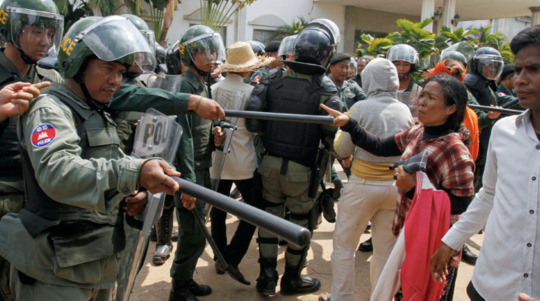
Indonesia

Source: http://www.popsspot.com/2014/05/jim-keady-deported-banned-indonesia-nike-protest/
In 2013, workers in factories supplying Nike protested for higher wages, resulting in authorities raising the minimum wage. But an investigation found that at least six Nike suppliers resisted implementing the pay rise. At one factory, high-ranking members of the military accompanied managers as they pressured mainly female employees to sign a document stating they were willing to go without a pay rise.
“We got summoned by military personnel that the company had hired to interrogate us and they intimidated us.”
Factory managers also asked trade union officials to sign what they thought was an attendance sheet, but it was attached to a document stating that they supported the company’s request.
Under Indonesian law, factories can apply to be excused from paying the minimum wage if they could demonstrate it would our them financially, and that their workers back this position. All but one of the 7/8 Nike suppliers were seeking exemption.
Money Invested in Sponsors vs Money Invested in Workers

Football championships are an opportunity for the main sportswear brands (Nike, Adidas and Puma) to release new marketing campaigns. These often have extremely high budgets. For example, Nike’s last World Cup campaign cost an estimated 68m dollars! Deals among the 10 biggest teams with brands rose from €262 to more than €405m since 2013. In addition, annual contracts with Lionel Messi and Paul Pogba reached sums of between €35-€40m in 2015.
For each shoe model, the brands set their desired retail price and profit margin, and from there calculate the maximum production cost for the item. From this, they determine how much workers are to be paid.
Each year, there are significant changes in the list of partner factories, due to brands moving from one country to another seeking cheaper labour, in order to increase their profit margins. Indeed, Nike are massively shifting their sourcing from China, where wages have significantly increased, to places where workers are paid less and worker conditions are less regulated, such as Myanmar, allowing significant labour cost savings.
So how much do you reckon ends up going to workers? Clue: not a lot.
In 2015, 2% of the retail price of footwear went to workers’ wages, compared with 1% of consumer or professional jerseys. For one Euro 2016 jersey, workers received less than €0.65, while the jersey was sold for about €85.
As one worker in Indonesia put it:
“Nike is a big brand. They can have (soccer great Cristiano) Ronaldo and Tiger Woods as their ambassadors. For me, a decade of working for them isn’t even one of their contracts. Of course it needs to be improved.”
This is also extremely ironic, given the huge investment in the ‘Girl Effect’, an organisation run by Nike, that works to end poverty globally, by giving girls and women the opportunity to lift themselves and their families out of poverty.
Don’t push out such ideas if you aren’t even willing to empower your OWN workers by paying them a decent living wage. THAT is how you get people out of poverty.
In fact, paying a living wage would only mean a few dozen cents more added to the final price. But with these savings, sportswear brands are able to invest in their lavish marketing. The Clean Clothes Campaign found that the ndorsement costs of the 10 largest European football clubs since 2013 would have been sufficient to pay living wages to 165,000 workers in Vietnam and 110,000 workers in Indonesia. ‘Low wages result not from a lack of means, but from a global business model that should be reexamined.’
Pricks.
So now you know the situation, what can we do?
1) Raise awareness: share this, or anything you feel will be valuable to let people know what is going down. We cannot add to the silence that is being subjected upon workers. It isn’t right. So please, tell your friends, your family, your ex etc, let them know what is happening.
2) Call out Nike: Every time you buy something from Nike, or browse on their website, why not take a couple of minutes out of your time to tweet them, email them etc, and ask what they’re doing to improve workers’ rights? It won’t take long, and if more of us do it, they will realise that the masses are ‘woke’ and aren’t blinded by their bullshit (sorry for my language).
Twitter: @nike
Instagram: https://www.instagram.com/nike/
Live Chat: https://help-en-gb.nike.com/app/contact/country/gb/p/5623
Phone number: (0) 2076604453
3) Get Involved: There are awesome activists doing big tings out here, especially American university students, who are relentlessly calling out Nike and protesting against any contracts their uni has with Nike. Do check out the United Students Against Sweatshops, and all the work they do- they’re sick. They are also holding a Global Call to Action Against Nike on July 25th, in response to the continuation of exploitation in their chain. find out more here

Source: http://www.dollarsandsense.org/archives/2012/0912blaskeygasper.html
References and other sources:
http://www.nasdaq.com/symbol/nke/financials?query=income-statement
Mass fainting in Cambodia: https://www.theguardian.com/business/2017/jun/25/female-cambodian-garment-workers-mass-fainting
Vietnam:
http://workersrights.org/freports/WRC%20Assessment%20re%20Hansae%20Vietnam%2012.6.16.pdf
http://www.dailyuw.com/opinion/article_1e37e88c-466a-11e7-acc9-1335389353eb.html
http://www.huffingtonpost.com/entry/nike-labor-rights-vietnam_us_56d893f2e4b0000de403b7d0
http://www.kgw.com/money/business/reports-find-wage-theft-verbal-abuse-forced-overtime-at-nike-contract-factory/369560869
http://www.slate.com/articles/business/the_grind/2016/08/nike_s_supply_chain_doesn_t_live_up_to_the_ideals_of_its_girl_effect_campaign.html
Indonesia:
http://www.modbee.com/living/article18774009.html
Denied Rights:
http://news.sky.com/story/cambodia-workers-hurt-at-nike-pay-protest-10444589
http://www.industriall-union.org/415-cambodian-nike-workers-sacked-for-striking
http://www.independent.co.uk/news/world/asia/nike-supplier-resisting-pay-rises-in-indonesia-8452946.html
Workers wages vs Endorsements
https://cleanclothes.org/news/2016/07/06/nike-adidas-and-pumas-workers-earn-poverty-wages-to-pay-for-european-championship-endorsements
1 note
·
View note
Text
Mo Honey, Mo Problems?
Honey is great right. It soothes coughs, it treats wounds, relieves allergies and it almost never expires. But is honey production hurting bees and why can it be considered unethical? We need bees to pollinate plants but as their numbers fall how can we help to ensure their survival.
This blog will be focussing on the question- is eating honey ethical? You can decide for yourself!

Honey is bee vomit. Yes. Bee vomit. Why is bee vomit so precious to bees as well as humans?

Bees store honey for nutrition during cold weather. “22,700 bees are required to fill a single jar of honey.” So it’s clear why it can be considered as common thievery when we consume honey. After all if you spent all summer making enough food to get by in winter, you’d be pissed if someone else decided they’re entitled to it.
Our relationship with bees, as it is with almost everything else on the planet on a mass scale, is unjust and not tayyib. Just as other animals are factory farmed, so are bees.
Factory farms pump bees with antibiotics whether the bees are sick or not. This is to prevent toxins from entering. Antibiotics contribute to immune system deficiencies and make bees resistant to pests and diseases.
Queen Bees are artificially inseminated to breed better. This causes the death of drones who naturally impregnate the Queen.
Bees have been manipulated to be bigger than they used to be 100 years ago
A study done by food safety news found that 3/4 of the 60 jars of honey were counterfeit and contained no bee pollen
Swarming (which is when the hive divides after the birth of a new queen) is avoided because it can cause honey production to decline. So beekeepers clip the wings of the queen, kill and replace older queen after just one or two years or confine a queen who is trying to begin a swarm.
But there is something to be said about a give and take relationship with bees. There are less than 200,000 hives in the UK and if this reduces any further sustainable food production would be affected. It is argued that the only reasons we have any bees at all is because of beekeepers.
Organic honey production can create a balanced human bee relationship. For example beekeepers move bees to areas that they can thrive at key times of the year. Without beekeepers there would be no bees because of parasitic mite infestation. Some people actually only take up bee keeping to beneficially impact the environment, and only take any surplus amount of honey. It’s also argued that beekeepers feed bees where they would have otherwise starved.
So what can you do to ensure you are making the most compassionate decision when it comes to honey?
Buy locally where you know exactly what is going down
Want to avoid Honey all together? What are the alternatives:
Agave nectar
Rice syrup
Molasses
Barley malt
Maple syrup
Dried fruit
Fruit concentrates
Further Reading
https://www.omlet.co.uk/guide/bees/honey_and_wax/a_jar_of_honey/
http://www.yourdailyvegan.com/vegan-guides/is-honey-vegan/
https://www.peta.org/issues/animals-used-for-food/animals-used-food-factsheets/honey-factory-farmed-bees/
https://www.lovefood.com/news/57559/whats-in-it-for-the-bees--is-it-ethical-to-eat-honey
https://www.theguardian.com/environment/2012/jun/17/ethical-living-eating-honey-lucy-siegle
#bees#queen bee#bee#insects#honey#pollination#flowers#nature#vegan#vegetarian#food#foodie#ethical#everday#shy#shy activist
0 notes
Video
MY UNHEALTHY TENDENCY TO MESS UP THESE VIDEOS BC I NEVER KNOW WHAT I'M DOING IN THEM IS BACK 🙃🙃🙃 anyways before I begin just wanna give a quick THANK UUUUU to anyone who came down to the event, we had a great time and loved meeting you guys- here's to more! If you swapped anything at the event do tag us in ootds you do, as you can see I love secondhand ootds but mostly looking at them, so do share! Anyways back to today's outfit: 🌸 £3 sunglasses from a charity shop in Leytonstone 🌸 £2 denim rose shirt from a secondhand stall in Walthamstow market 🌸 £4/£5 basketball top from Islamic Relief in Walthamstow 🌸 £3 black skirt from Oxfam in Walthamstow 🌸 I swear this wasn't a sponsored ad for Walthamstow or something, genuinely don't know how that happened looll 😩anywayss hope you enjoyed this oneee lemme know you're thoughts, even if you think its clapped...just be nice about it pls. Have a great day!! . . . . . . . #ootd #ethicalootd #fashion #ethicalfashion #ethical #ohsoethical #ethicalblogger #blogger #blog #charityshop #charity #thriftshop #thrift #secondhand #london #eastlondon #hide #thrifty #thriftythursday #upcycle #recycle #homemade
#secondhand#thriftshop#blogger#ethical#ethicalblogger#ethicalfashion#hide#charity#thriftythursday#homemade#london#ootd#upcycle#ethicalootd#thrift#blog#ohsoethical#recycle#charityshop#eastlondon#thrifty#fashion
1 note
·
View note